Will climate change reset capitalism?
Will climate change reset capitalism?
A miracle that created unprecedented prosperity or a system programmed to eradicate mankind? Never before has modern capitalism been as controversial as it has been in the early 2020s. But what would version 4.0 of a capitalist system look like?
By Andreas Cervenka

Will climate change reset capitalism?
A miracle that created unprecedented prosperity or a system programmed to eradicate mankind? Never before has modern capitalism been as controversial as it has been in the early 2020s. But what would version 4.0 of a capitalist system look like?
By Andreas Cervenka
If the dilemma faced by mankind were to be summarised in just a few figures, these would make a good start. First: 16.82. That’s how many degrees Celsius the global-mean surface air temperature rose to in August 2023; the highest ever registered and around 1.5 degrees higher than the pre-industrial period (1850-1900).
Next: 2,500 billion. That’s how many Swedish Krona the world’s five biggest oil companies made in profits in 2022, which was double that of the previous year. Investments in new extractions of oil and gas in 2023 are predicted to approach 6,000 billion SEK the highest figure since 2015, according to the International Energy Agency (IEA).
Ramping up production
In the pursuit of bigger profits, the oil and gas majors are ramping up production rather than investing in renewable energy sources that are known to be less profitable. By the standards of modern capitalism, the oil majors’ advances make an amazing success story.
The ExxonMobil share price has risen by 250% since the autumn of 2020, and in September 2023 it reached an all-time high. ExxonMobil CEO Darren Woods’ compensation rose from 175 million SEK in 2020 to over 400 million SEK in 2022. The shares he received as a bonus during his six years as CEO are now worth 1.8 billion SEK in total. The signal the system is sending to Darren Woods and others in similar positions is: keep up the good work! So expect production and sales of fossil fuels to continue to increase.
The problem of course is that ExxonMobil’s income statement and share price only tell one side of the story. At the same time as this hyper-effective profit-making machine enriches shareholders, it’s also indirectly generating waste in the form of huge costs, both human and economic.

In 2022, the world’s five biggest oil companies made 2,500 billion Swedish Krona in profits.

In 2022, the world’s five biggest oil companies made 2,500 billion Swedish Krona in profits.
The extreme weather events of 2023 make the looming climate catastrophe caused by rising CO2 emissions – which researchers have long been warning us about – seem less like a distant dystopia and more like an acute situation in the here and now. And ExxonMobil’s share of the bill for the costs is precisely zero. The profits flow to the company’s owners while the costs are incurred by current and future generations of people.
Ultimately, this inherent conflict can be seen as a question of priorities: what’s more important – profit or the survival of humanity? For more than 50 years now, the answer has been obvious: profit!
What’s more important – profit or the survival of humanity? For more than 50 years now, the answer has been obvious: profit!
In recent years, however, many have started to question the fairness of this choice for what seems to be good reasons. To understand where capitalism stands today and where it is heading, we need to rewind the tape.
There are two key years to keep in mind, the first of which is 1970. That was when an essay written by the American economist Milton Friedman was published in New York Times Magazine. The 18,000-characters-long essay exudes a sense of frustration. Friedman questioned the prevailing doctrine at the time of the need for businesses to exercise social responsibility.
A global revolution
He dismissed it as nonsense, making his view clear in the essay title: “The social responsibility of business is to increase its profits.” It would mark the start of a global revolution in the business world. The singular purpose of a business was to enrich its owners. Shareholder capitalism was born.
In its statement on the purpose of a corporation, the powerful Business Roundtable, an association of the leading companies in the United States, declared that corporations existed to serve their owners. The new dogma was personified by the legendary Jack Welch, CEO of General Electric between 1980 and 2001. His business principles included continuous restructuring processes, relocation of production to low-wage countries, and a crass staff policy of firing the bottom 10% of employees deemed to be low performers every year.
In recent years many have started to question the fairness of the fact that profit is the overall goal.


In recent years many have started to question the fairness of the fact that profit is the overall goal.
The core of this new doctrine is perhaps best captured in the character of Gordon Gekko, played by Michael Douglas in the film Wall Street from 1987. “Greed, for lack of a better word, is good. Greed works. Greed clarifies, cuts through, and captures the essence of the evolutionary spirit.” The film’s director Oliver Stone thought that the film would serve as a warning to the upcoming generation. Instead, it became arguably the most successful recruitment campaign ever for the finance industry. Everyone wanted to be like Gordon Gekko and Jack Welch, who in 1999 was hailed by Fortune as “CEO of the Century.”
To get to the next key year, we need to fast forward 49 years to 2019, the year when the Business Roundtable adopted a new version of its statement on the purpose of a corporation. This one contained a dramatic change: the wording about shareholder value was now replaced by a statement about how the company would benefit all stakeholders: customers, employees, suppliers, communities and shareholders. The new statement was signed by 181 business leaders, including Amazon’s Jeff Bezos and Apple’s Tim Cook.
A model under strain
Later the same year, the Financial Times, the favoured newspaper of the global financial industry, launched a large-scale campaign called “Capitalism: time for a reset.” The editor at the time, Lionel Barber, wrote: “The liberal capitalist model has delivered peace, prosperity and technological progress for the past 50 years, dramatically reducing poverty and raising living standards around the world. But in the decade since the global financial crisis, the model has come under strain, particularly the focus on maximising profit and shareholder value. These principles of good business are necessary but not sufficient. It’s time for a reset.”
This marked an extraordinary U-turn. What had happened? According to the reputable business newspaper The Economist, the answer was simple: Karl Marx was right.
According to the reputable business newspaper The Economist, the answer was simple: Karl Marx was right.
In an analysis performed back in 2018, the newspaper concluded that many of the renowned philosopher’s predictions about capitalism had actually come true. According to Marx, capitalism is in essence a system of rent-seeking whereby a few can accrue vast profits at others’ expense without contributing to society. He also believed that capitalism tended to create monopolies, that it would inevitably reach the far corners of the world and that workers would be the losers through being forced to move from one insecure job to the next.
Half of the companies in the 2003 ranking of the world’s top ten companies – Apple, Google, Amazon, Nvidia and Meta – hold monopolistic positions in their respective markets. The tech giants’ dominance has been compared to that of America’s so-called robber barons of the late 19th century. The gig economy has created an army of workers in a weak negotiating position.
The share of value created in companies that goes to the employees has steadily declined in the Western world since the 1970s. According to the International Monetary Fund, a major contributory factor to the high rate of inflation in the past two years is that companies took the opportunity to increase their profits.

Environmental, social and governance (ESG) investing and impact investing are concepts that have been established in recent years.

Environmental, social and governance (ESG) investing and impact investing are concepts that have been established in recent years.
Another side effect that has been linked to the shareholder paradigm is increased inequality. In 1970, the CEO of a large US company earned the equivalent of 24 workers; by 2021 this figure had risen to 399. Whereas wages for ordinary people rose in the post-war decades, over the past 15 years they have stagnated, but for those at the top they have risen. Financial Times columnist Martin Wolf has called the system that enriches the few rather than the many “rigged capitalism.”
A somewhat bizarre effect of the focus on share prices is that large companies increasingly opted to spend their money on buying back their own shares, a short-term manoeuvre, rather than invest in the future. And this happened at the same time as the post-financial crisis economy was suffering from a lack of investments. The 2008 financial crisis, caused by profit-driven and risk-averse banks, had political as well as economic consequences. Populism has become widespread in both the United States and Europe. As former Trump strategist Steve Bannon put it: “The legacy of the financial crisis is Donald J. Trump.”
Like powerful AI
In a global survey conducted in 2020 by PR consultancy Edelman, 57% of respondents agreed with the statement: “Capitalism as it exists today does more harm than good in the world.” Shareholder capitalism can be described as a powerful form of AI that programmes companies to seek increasingly larger profits without considering the consequences for society.
The time seems to have come for a reset, and attempts to achieve that are now well underway.
The Financial Times is not the only one to put its foot down; environmental, social and governance (ESG) investing and impact investing are concepts which any business leader with an instinct for self-preservation has been throwing around in recent years.
If the industrialisation of the late 1800s and early 1900s was Capitalism 1.0, of the postwar years Capitalism 2.0 and of the Jack Welch era Capitalism 3.0, perhaps the search for Capitalism 4.0 is best symbolised by Larry Fink, head of Blackrock, the world’s largest investment manager with assets of over 9,000 billion USD (around 100,000 billion SEK or almost 20 times Sweden’s GDP).
In 1970, the CEO of a large US company earned the equivalent of 24 workers; by 2021 this figure had risen to 399.


In 1970, the CEO of a large US company earned the equivalent of 24 workers; by 2021 this figure had risen to 399.
Already in 2016, he encouraged companies where Blackrock held shares to make their businesses environmentally and socially more sustainable. His interest in the issue did not originate in a wish to save the world, but rather to earn money. Many of the world’s pension fund managers began doing the maths years ago. With an investment horizon of, in many cases, 30 to 50 years, it would be an advantage if the planet was habitable when pensioners are due to get their money. In other words, offering investments with a climate-friendly profile was a major business opportunity. In his annual letter to CEOs in 2020, Larry Fink wrote that “climate change has become a defining factor in companies’ long-term prospects.”
Many have followed suit
Many other financial actors and big companies have followed suit. According to the consultancy McKinsey, 90% of the biggest US companies now publish ESG reports. There has been a surge in the number of funds claiming to invest ethically and climate-consciously. Companies have signed undertakings to reduce their CO2 emissions. The goal of becoming “climate neutral by the year X” is as much a matter of course in annual reports as are profit forecasts.
A total of 35,000 billion USD is estimated to be invested with some consideration given to either the climate or corporate social responsibility. After Russia’s invasion of Ukraine, further requirements were placed on companies to pull out of the country, whatever the cost. Companies that failed to respond fast enough faced customer protests and boycotts. The largest US companies mentioned ESG an average of nine times in their 2022 quarterly reports to investors, compared with once in 2017.
This all sounds promising, but there’s a problem: who decides what it takes for a company to be deemed sustainable?
This all sounds promising, but there’s a problem: who decides what it takes for a company to be deemed sustainable? And what incentives do companies actually have to set ambitious goals if no one forces them to do so? ESG barely managed to establish itself in the business world before it became a dirty word. Blackrock and Larry Find have become the target of ferocious attacks, not least from the conservative right, which believes that ESG stands for “woke capitalism,” an invention of leftist potheads to advance their agenda.
Among the most vocal critics is the US presidential candidate Ron de Santis, and among those heading the campaign is the world’s richest man, Elon Musk, who called ESG a “bluff” and on which he commented on X, formerly known as Twitter – which he now owns – as follows: “The woke mind virus is either defeated or nothing else matters.”
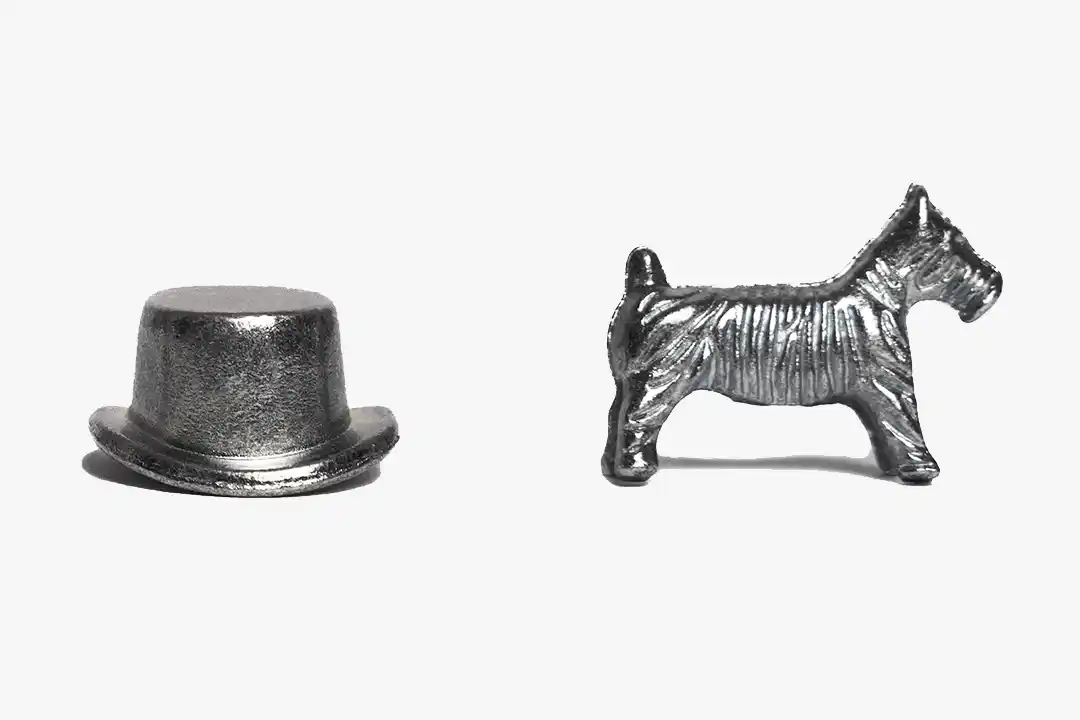
One of the most interesting ideas for a new model is “doughnut economics.” It’s about balancing social goals so that everyone’s basic needs are met within Earth’s ecological boundaries.

One of the most interesting ideas for a new model is “doughnut economics.” It’s about balancing social goals so that everyone’s basic needs are met within Earth’s ecological boundaries.
The conflict came to a head in the United States when 19 Republican states accused Blackrock of abusing its position by boycotting investments in oil companies. Lately, Blackrock has toned down its message at large companies’ shareholder meetings, and Larry Fink has said that he stopped using the term ESG because it was so polarising. This has prompted several states that invest substantial amounts of pension capital to warn Blackrock not to cave into the pressure.
Ideas and models abound of what Capitalism 4.0 might look like. One of the most interesting is “doughnut economics,” a term coined by British economist Kate Raworth in a book published in 2017. Briefly put, it’s about balancing social goals so that everyone’s basic needs are met within Earth’s ecological boundaries.
A central idea is to abandon continuous GDP growth as the key goal for the economy. Already in 2011, US economists Michael Porter and Mark Kramer launched the idea of “shared value” as the new purpose for companies, where they would focus on making a profit, though on the “right” kind of profit; that is, one that benefits wider society.
Endorsed by the pope
“Inclusive capitalism” is another concept, which is even endorsed by the Pope and has won the support of politicians and business leaders like Marc Benioff, billionaire and founder of the software company Salesforce. Here, too, profits would lead to a greener, fairer world. Another phenomenon is that of “benefit corporations,” a business form where corporate social responsibility is incorporated into company statutes. B Lab, an organisation that issues certifications according to a given set of criteria, claims to have over 7,400 certified companies in 92 countries, including the ice cream maker Ben&Jerry’s.
Does all this sound a bit fuzzy? That’s maybe because it is. The very task of putting numbers on the goals for this new capitalism has proven to be a major obstacle. It has also left the field open to charlatans. Three-quarters of all big US companies now link different versions of ESG goals to the determination of CEO compensation. But the fuzziness has meant that large investment managers began complaining that the goals could easily be manipulated to boost bonuses. And despite all the hype surrounding ESG, the pursuit of profit in its purest form still dominates the global business world. Perhaps it’s there, in the focus on profit, that the catalyst for the real paradigm shift lies, because climate change is now starting to cost money, and lots of it.
A study published in the journal Science Advances found that extreme heat cost the global economy the equivalent of 170,000 billion SEK between 1992 and 2013. During the first half of 2023, large insurance companies have lost more than 500 billion SEK. The cost of insuring against natural catastrophes and extreme weather has skyrocketed. Two of California’s biggest insurers announced this summer that it would stop insuring homes.
In recent years the world’s major central banks have begun warning that climate change could trigger the next financial crisis.
In recent years the world’s major central banks have begun warning that climate change could trigger the next financial crisis. The Financial Stability Board, a body that monitors risks in the global economy, estimates that losses from weather-related catastrophes rose from around 2,000 billion SEK annually in the 1980s to over 18,000 billion SEK in the 2010s. The countries most vulnerable to climate change have seen a surge in borrowing costs.
Things can happen quickly once the global financial world wakes up to this new reality, because suddenly it will no longer be about some fuzzy goal of saving the planet, but about saving profitability. Maybe Capitalism 4.0 will turn out to be very similar to its predecessor 3.0.
Maybe greed works after all.
[Sassy_Social_Share]
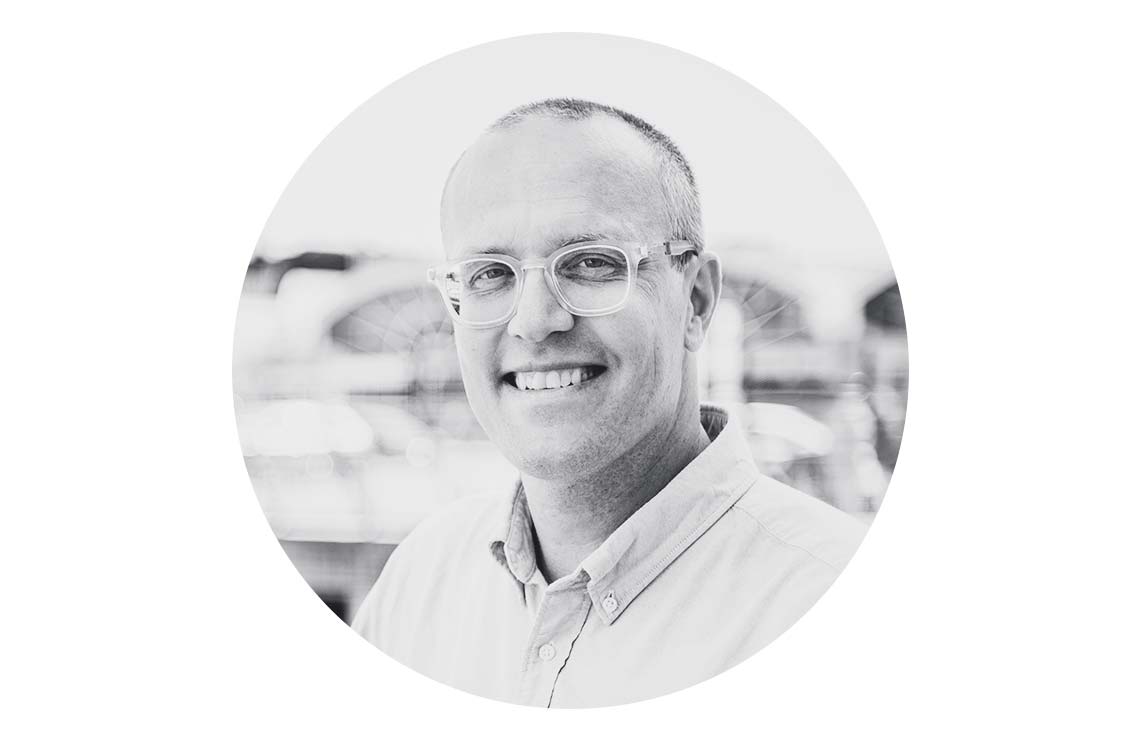
Andreas Cervenka
Columnist, Aftonbladet
Years in Schibsted: 12
My favourite song the last decade: Cairo, IL – The Brother Brothers
Putting the purpose centre stage
Putting the purpose centre stage
The sustainability issues we currently face in society have become a meeting with destiny. Yet, we still talk about sustainability as a detached strategy. At Schibsted Nordic Marketplaces this has changed, and sustainability is at the very core.
By Christian Printzell Halvorsen

Putting the purpose centre stage
The sustainability issues we currently face in society have become a meeting with destiny. Yet, we still talk about sustainability as a detached strategy. At Schibsted Nordic Marketplaces this has changed, and sustainability is at the very core.
By Christian Printzell Halvorsen
The 21st century has brought with it a growing awareness of the environmental and social challenges hitting our planet. Climate change, resource depletion, inequality and environmental degradation are no longer distant concerns but rather pressing issues that demand immediate attention. The private sector plays a pivotal role in addressing these challenges, and the need for ambitious action has never been more urgent.
History has taught us that corporate sustainability is not a passing trend but an evolving imperative. As we look to the future, businesses that lead in sustainability will not only thrive economically but also contribute significantly to solving the vital challenges of our time.

Schibsted owns marketplaces in Finland, Norway, Sweden and Denmark.

Schibsted owns marketplaces in Finland, Norway, Sweden and Denmark.
A Transformation Journey
With this insight as a backdrop, Schibsted Nordic Marketplaces entered 2022 with another urgent matter in mind. We knew we needed to change – drastically. To future-proof our ability to align with user values, address global challenges, and champion sustainability, we had to transform our entire organisation and business.
That’s why, at the beginning of 2022, we transitioned away from our country-based organisation to create a verticalized Nordic Marketplaces. With this transformation, our different business areas (henceforth referred to as verticals) of recommerce, mobility, real estate, and jobs would finally be allowed to develop and grow individually, while sharing the same foundational resources.
For you as a user, this change would mean that you would still go to FINN, Blocket, Oikotie, DBA and our other brands to meet your needs – but your experience in doing so would improve significantly.
The Power of Verticalisation
A key rationale behind the decision to set our verticals free was that our users and customers have different needs that require different solutions. Verticalising is specialising, a way to meet user needs in the best possible way.
Before this bold move, a strategic decision made in one vertical would impact the direction of another. They depended on the same pool of resources. They had to coordinate their efforts and sometimes they had to wait for one another. We duplicated our efforts four times over in each country, depleting ourselves and depriving ourselves of opportunities. That dependency limited the verticals’ potential for individual growth. By verticalising and setting them free, we now give them unprecedented opportunities to develop in their own directions.
Our Social Responsibility
Clearly, there was a huge growth potential in strengthening our positions to increase our positive impact on our core stakeholders – our users, society, and the planet. Already from the get-go, we knew that this was the key purpose of our transformation. Schibsted Nordic Marketplaces has a unique position in society and a unique social responsibility. In this work, we were emboldened by our burning ambition – to empower people to make smart choices for themselves and future generations. Verticalising is a means to take our social responsibility seriously and move our important position forward – to manage and develop it – also in the future.
Sustainability at the Core
Rather than taking the classic route of mapping out a new organisational structure and new business strategies supporting our vertical transformation – we instead began our change journey by putting our purpose centre stage. All decisions, discussions, and priorities that took place after that pivotal moment were balanced and measured according to their potential to help us reach that purpose, that burning ambition. Sustainability was our starting point and our North Star.
As a result, sustainability became an integral part of not only the overall purpose, vision, structure, and business model of Nordic Marketplaces, but of all our new strategies and goals for our separate verticals as well.
For us, that means making sustainable alternatives and circular consumption the obvious choice and helping people access more while owning less. It means creating an inclusive job market where people’s skills are used optimally, and no talent is lost. Making smart and sustainable mobility choices the norm, reducing our footprint on the world, and finally, creating a fair and transparent real estate market.
The trends in corporate sustainability are ever-evolving, and companies must stay agile and innovative to remain at the forefront. Embracing circular economy principles, ensuring supply chain transparency, transitioning to renewable energy, and engaging in social impact initiatives are just some of the ways the business sector can continue to make a positive impact on the planet and society.
The success and relevance of companies in the 21st century hinge on their ability to champion sustainability, align with consumer values, and address global challenges. By doing so, these companies can not only thrive but also become catalysts for a more sustainable and equitable future. At the end of the day, sustainability is not just a strategy – it’s at the very core of our future success and the future of our planet.
[Sassy_Social_Share]
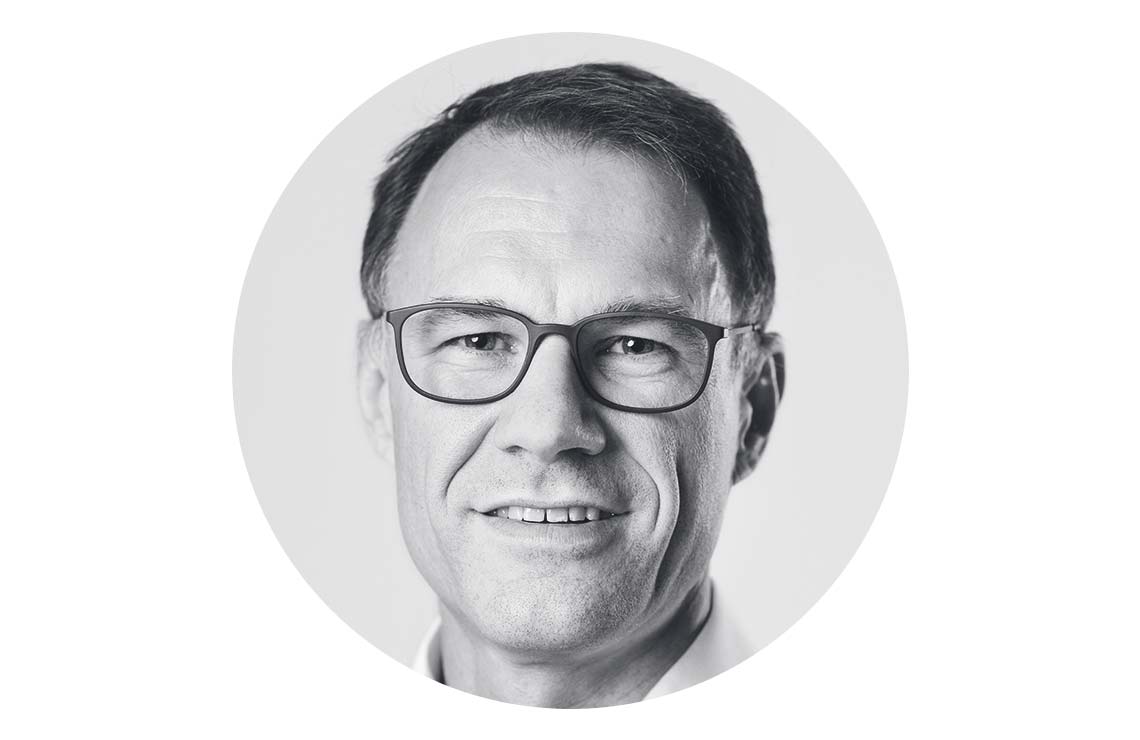
Christian Printzell Halvorsen
EVP Nordic Marketplaces,
eCommerce & Distribution, Schibsted
Years in Schibsted: 16
My favourite song the last decade: Gospel (with Eminem) – Dr. Dre
Recipe for a podcast success
Recipe for a podcast success
Svenska Dagbladet’s podcast series on the Stenbeck family of financiers was an experiment in more ways than one. But the gamble resulted in the newspaper’s most successful publication to date. Producer Adam Svanell tells the story.
By Adam Svanell
Tom Henley, Hugo Lavett, Jan Almgren (in the back), Lovisa Lamm Nordenskiöld and Adam Svanell worked together on SvD:s podcast series Dynastin.

Recipe for a podcast success
Svenska Dagbladet’s podcast series on the Stenbeck family of financiers was an experiment in more ways than one. But the gamble resulted in the newspaper’s most successful publication to date. Producer Adam Svanell tells the story.
By Adam Svanell
The idea didn’t come from some decision taken at senior management level or some brainstorming session; it came during a coffee break. In the autumn of 2021, I was working as long read editor for Svenska Dagbladet and had invited Lovisa Lamm Nordenskiöld and Robert Barkman from the production company Banda to give an inspirational talk. At SvD we wanted to focus more on audio stories in some form or other but didn’t know exactly how we should go about it. The idea was to start with Lovisa and Robert holding a basic course in the do’s and don’ts of radio journalism to a group of selected reporters.
I had assumed that the younger reporters would be especially enthusiastic about getting the chance to learn something new, but it turned out that Jan Almgren, an experienced business journalist approaching 60, was the one who asked the most questions. During a break, while Lovisa stood by the coffee machine, Jan piped up: “I’d like to do a podcast from the business world. There are loads of good stories there,” he said. Lovisa was quick to respond: “Absolutely. Who wouldn’t want to hear a documentary about the Stenbeck family, for instance?” I don’t want to exaggerate how dramatic that moment was, but something in the room shifted. I guess everyone sensed what an incredibly good idea it was.
The monopoly buster
The Stenbecks are one of Sweden’s wealthiest, most powerful and most secretive families. They’re more colourful than other families of financiers, but they’ve also been plagued by drug abuse, open power struggles and premature deaths. Several books had already been written and documentary series made about Jan Stenbeck, the mythical American-style entrepreneur who had been one of Sweden’s most controversial figures in the eighties and nineties. The monopoly buster. The man who brought commercial TV and the consumer mobile phone to Sweden, even though they weren’t actually allowed. But there was another story, one that wasn’t as well known: the one about Jan Stenbeck’s American-born children. They had barely reached adulthood when their father died of a heart attack in the summer of 2002, leaving them with a hugely successful empire.

Sophie Stenbeck with one of the horses at her ranch in Wellington, Florida, March 9 2022.

Sophie Stenbeck with one of the horses at her ranch in Wellington, Florida, March 9 2022.
They seemed to be characters straight out of a Shakespeare play. Cristina Stenbeck, the eldest child, who assumed her father’s mantle as head of both the family and the business empire and became one of Europe’s most powerful businesswomen. Hugo Stenbeck, the wayward son who made headlines for bar brawls and drunk driving. Sophie Stenbeck, the more sensitive sister who was involved in charity work and was referred to as “the family’s Mother Teresa.” Max Stenbeck, his father’s favourite child, the charming little brother who was predicted to take over the family business one day but who instead died at the age of 30. And then there was Felix Granander, the “unknown son,” whose existence his half-siblings knew nothing about until their father’s death.
Like all genres, Swedish podcasts and radio documentaries have certain methods and conventions. They revisit a historical news event, portray a person as either eccentric or as someone who met a tragic fate, or they sniff out some kind of mystery. A lot of documentaries look like that. What appealed to me with this idea was that it had the potential to be something different; a cross between a business story and a family saga. More like a TV drama, where the audience follows a given cast of characters over time.
Well, there’s no denying the insatiable curiosity about the rich and powerful.
Of course, other journalists had tried to portray the Stenbeck siblings, but they had done so from the outside and from a distance. If we were going to do it, we would do it from the inside.
Jan and I had a meeting with the production company Banda and agreed on a plan: if we could get one of the Stenbeck siblings to participate, we would make a documentary series together. If we managed to get two of them to do interviews, the series had the potential to be really good. We began by approaching Sophie Stenbeck because she seemed to be the sibling that would most likely consider the proposition. In her youth, she was known for shying away from the spotlight, but in recent years she had done a couple of interviews. Maybe she had changed her view of the media? It was worth investigating.
Agreed to an interview
So one morning in March 2022, Jan and I drove to Sophie’s equestrian centre in Wellington, Florida. She had agreed to give us three whole days of interview time. But we were nervous; we had no idea whether she would actually tell us anything of substance or just answer our questions politely, superficially and evasively like a media-trained person of power.
As it turned out, Sophie Stenback was more than ready to talk. She spoke with astonishing candour about everything from the power struggles within the family empire to the deaths of her father and brother. When Jan and I drove away from the equestrian centre after conducting the first day of interviews, we were so excited that we screamed out loud.
The work continued after the Florida trip. Jan approached more people for potential interviews and I began editing the material recorded on our trip. Everything felt good, we were just about home and dry – or so we thought. In actual fact, we had a long and strenuous process ahead of us. For one thing, we had made some mistakes. One example among many is when Jan interviewed Lars Johan Jarnheimer, spokesperson for Ikea’s holding company and an extremely busy man. When the one-and-a-half-hour interview ended, Jan glanced at the audio recorder and realised he had forgotten to turn it on. He was forced to grovel until Jarnheimer finally agreed to do the whole thing over again from scratch.
A crucial participant
But what concerned us most was the time it took for the other three siblings to reply. Although Cristina Stenbeck said no to taking part almost immediately, we still held out hope that Hugo Stenbeck would agree, but his spokesperson finally informed us that he declined. The fact that Felix Granander, “the unknown son,” hadn’t replied at all made the situation even more stressful.
Hugo and Cristina had always been close to Sophie, and in our interviews, she had also talked a lot about their life experiences. But Felix had grown up far away on the other side of the Atlantic and had led a turbulent life. Only he could tell his story.
Finally, after many months of waiting, Felix informed us that he would participate. He gave us three long interviews in which he talked open-heartedly about his drug abuse problem and the grief he felt for the father he never got to know. He also revealed that he didn’t know, and hadn’t even met, his half-siblings Cristina and Hugo.
Back to the drawing board
Jan and I then wrote and edited this into a documentary series in six episodes, telling a story that played out over two decades, from Jan Stenbeck’s sudden death in 2002 to his daughter Cristina’s abdication as head of the business empire in the early 2020s. We played the episodes for Lovisa Lamm Nordenskiöld and her colleague Hugo Lavett in Banda, thinking that the series was more or less completed. But they didn’t agree; we had told the story in the wrong sequence, they didn’t sympathise with the siblings when they listened to them, and they found it difficult to follow when the life stories of the father and the five children were presented simultaneously. We had to go back to the drawing board.
After a long delay, the series, called Dynastin (The Dynasty), was finally released in January 2023. For us at Svenska Dagbladet, the publication also proved to be a real experiment. Previously we had released our bigger podcast projects free of charge on all the regular platforms like Spotify, Apple Podcaster and Podme. People with experience from the podcast industry had told us that it was hard to charge for podcasts and that audiences are rarely prepared to use podcast apps other than the ones they use for their regular podcasts.
But this time we decided to take a chance. We decided to publish the first two episodes on all platforms but to make the four remaining episodes available only on Svenska Dagbladet’s own site and to paying subscribers. We had no idea whether it would work; we were running the risk that people might be content with hearing the two free episodes. But if that happened, we always had the option of releasing the rest of the series free of charge later.
Most successful publication
As it turned out, we had worried in vain; at the time of writing, Dynastin has drawn over 600,000 listeners. Every fourth person who heard the two free episodes chose to go to SvD.se to continue listening. In fact, the number of subscriptions sold beat Svenska Dagbladet’s previous record by a huge margin. The series has attracted attention in lots of TV and radio programmes, podcasts and newspapers. In terms of both conversion and reach, it’s SvD’s most successful publication to date.
When you write a text like this one, you’re expected to offer some kind of recipe for success, some explanation of why it went so exceptionally well. So what do I think? Well, there’s no denying the insatiable curiosity about the rich and powerful.
Because Sophie Stenbeck and Felix Granander decided to speak out, we could give a unique insight into a family which previously had kept a very low profile. But I don’t think that insight would have had the same impact if it had not been presented with sound narrative craftsmanship, without a script that was honed time and time again and without Jan Almgren’s skilful investigation into the family’s business empire. Also, without Jan’s experience and reputation capital, many key figures would never have taken part and spoken as candidly as they did.
For me, as a podcast creator, the project sparked a desire to dare to experiment even more with methods and genres. It was a reminder that you shouldn’t have too much respect for the “truths” you hear from experts. And not least, Dynastin has proved that these types of ambitious documentary projects are not just journalistically relevant and good for a brand; in the best-case scenario, they can also be good business.
[Sassy_Social_Share]
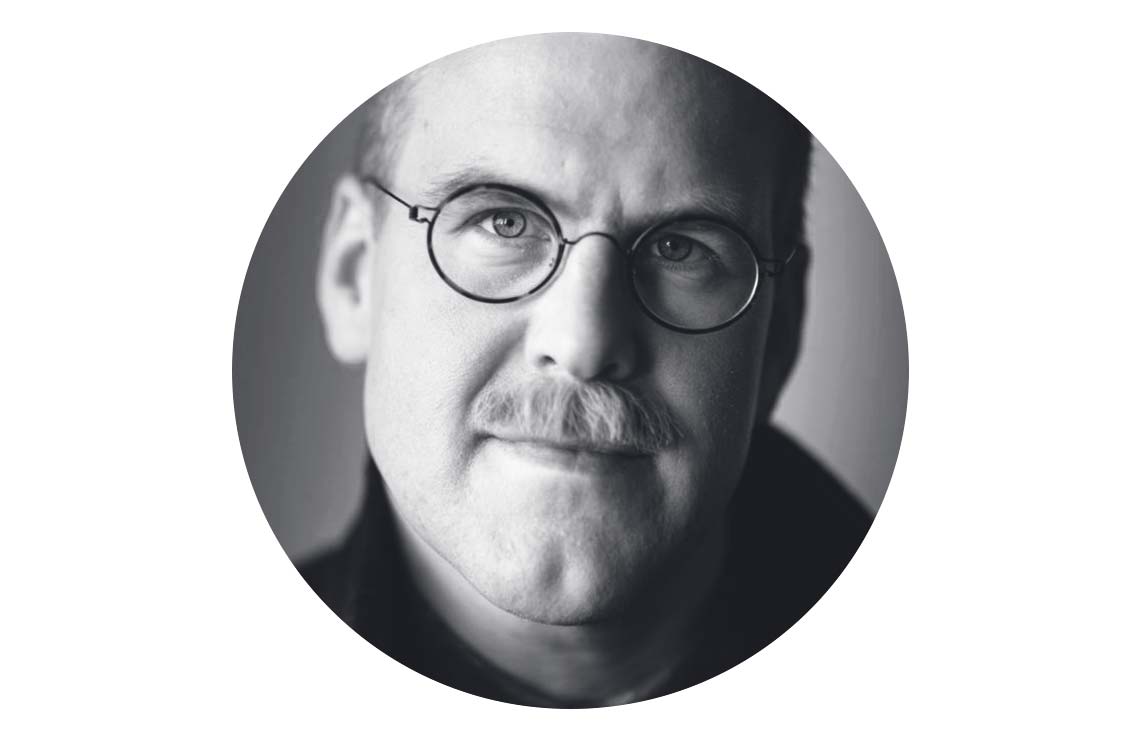
Adam Svanell
Head of Documentary, SvD
Years in Schibsted: 11
My favourite song the last decade: Mam Yinne Wa – Alogte Oho & His Sounds of Joy
As the tiger leaves the scene – there is room for curiosity
As the tiger leaves the scene – there is room for curiosity
The venture capital market is going through a profound change. From extreme economic volatility to a demand for profitable growth. In a conversation, Andrew Kvålseth, Schibsted´s CIO and EVP of Growth and Investments, shares his view on what this means and how Schibsted is focusing on investing closer to core.
By Nathalie Kåvin
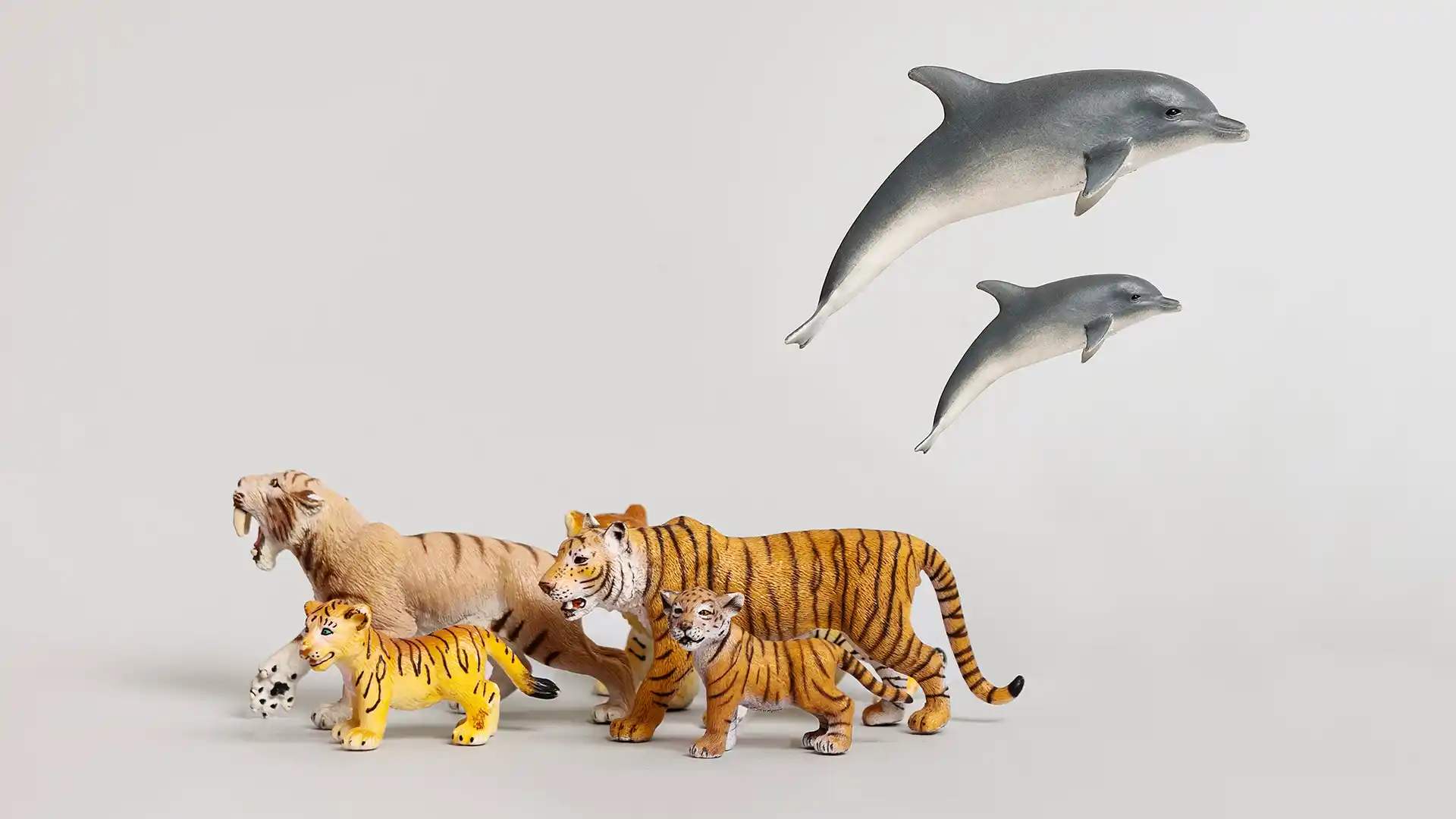
As the tiger leaves the scene – there is room for curiosity
The venture capital market is going through a profound change. From extreme economic volatility to a demand for profitable growth. In a conversation, Andrew Kvålseth, Schibsted´s CIO and EVP of Growth and Investments, shares his view on what this means and how Schibsted is focusing on investing closer to core.
By Nathalie Kåvin
In Schibsted Future Report 2022, a previous colleague wrote an article on what was defined in the VC world as “The Year of the Tiger.” At that time venture capital was booming. In the third quarter of 2021, a whopping 158.2 billion USD was invested into startups at various stages, according to CB Insights. This was more than double the investment compared to the third quarter of 2020. As recently mentioned by Asset Class, however, the influx of capital, coupled with readily available leverage, led to a booming era of dealmaking while sending asset prices and company valuations to record highs.
After three years of extreme economic volatility, the world and VC economy look quite different. As described in a recent article in TechCrunch, venture deal volume has fallen every quarter since Q2 2022 across the world, and the trend shows no signs of reversing.
A repricing of risk
So, what key impacts have these dramatic changes had on the global VC markets?
Andrew Kvålseth starts our conversation by explaining why we now are at a place where the market value companies vastly different than in the “years of the tiger.”
“Most importantly – we’ve seen a repricing of risk,” he says. “When interest rates were near zero, it mattered less whether or not you earned a million dollars today or a million dollars five years from now. This put a tremendous focus on gaining scale, and very little focus on profitable growth.”

Leaving the tiger behind, Andrew Kvålseth thinks we’re in the year of the dolphin.

Leaving the tiger behind, Andrew Kvålseth thinks we’re in the year of the dolphin.
As interest rates continue to rise and as investors adjust to the changing economic conditions, the high prices previously paid for assets have started to eat into returns. This has dramatically changed the type of business models that work, the type of investments that work, and how much a company is valued at.
“The result is a re-rating of the value of all ventures and early-stage growth companies. Investors now value companies completely differently and want to make sure companies can find profitable growth sooner rather than later.”
Knowing your local market
Andrew Kvålseth joined Schibsted in 2021. After spending eight years in Asia now he is responsible for all investments in Schibsted, managing a large venture portfolio and overlooking the larger strategic investments. The years in Asia have given him a special interest in the area – but also some personal learnings. Not least about the importance of knowing your local market, when developing consumer products and business solutions.
And as the global VC market navigates tougher times, he believes the European and Nordic region has a clear competitive advantage related to localization. Despite a slower 2023, Europe’s share of global VC is at a record 19% in 2023, up from 13% in 2013, according to the latest statistics by Dealroom. Europe’s share of global early-stage VC is at a record 24% in 2023. This means Europe is catching up with the US at the very earliest stages.
When it comes to our news media business; artificial intelligence is obviously important.
Andrew explains that there are some key differences between operating startups in different markets like the US, Europe and Asia. The US has the highest GDP globally of any country, with roughly 350 million people, meaning that if you can dominate that market, you can reach a massive scale. There is value in investing to get the number one position in a market like that. You can scale quickly and the rewards for being dominant are tremendous, meaning you can take a lot of risk to get there.
“But in Europe, the story is quite different. You really need to scale country by country in most businesses. You need to acquire new customers, you need to beat local competitors, and you need to adhere to local regulations. So, it really requires a bespoke approach market by market and more of a controlled growth. It’s not just about securing that number one spot, no matter how much capital it takes,” he says.
“I believe this can foster a different kind of innovation that can give European players an advantage.”
The main focus for Schibsted is to strengthen the core business areas – marketplaces and news media.


The main focus for Schibsted is to strengthen the core business areas – marketplaces and news media.
When he arrived in Asia ten years ago, he understood that people typically look at Southeast Asia as one market. When it instead is a collection of largely different countries with different political systems and consumer habits, and in different stages of maturity.
“This gave me humbleness as to how challenging it is to understand a local market and consumers when you did not grow up being a consumer in that market.”
This is also why Schibsted’s growth and investment team have people from each Nordic market, where they operate.
“Just like with Asia, people from the outside look at the Nordic countries as quite similar, but in reality it’s quite the opposite with different cultures and consumer preferences in each country.”
Strengthening the core
So, what are the major trends this team in Schibsted is looking at when investing in new companies in the next couple of years?
Andrew is very clear on one thing – the main focus is to strengthen the core business areas – marketplaces and news media.
“When it comes to our news media business; artificial intelligence is obviously important, it will affect how content is generated but also how people consume news. And the fact that a large part of the population is now consuming news through thirty-second snippets on TikTok is a new reality.”
Schibsted has a core part of its vision to protect news, by upholding a society built on trust and transparency. This is something we believe is a fundamental part of a democracy.
“And that’s in a way being threatened in the way people consume media today. This means we need to look at how we invest in formats, companies and platforms that allow us to get quality news, which we believe is important to ensure freedom and democracy and to provide that to consumers in a way they find attractive and engaging.”
He also points out that people blend entertainment, sports and news into one experience. And that in Schibsted we are very strong within news, but we need to become stronger in entertainment and sports.
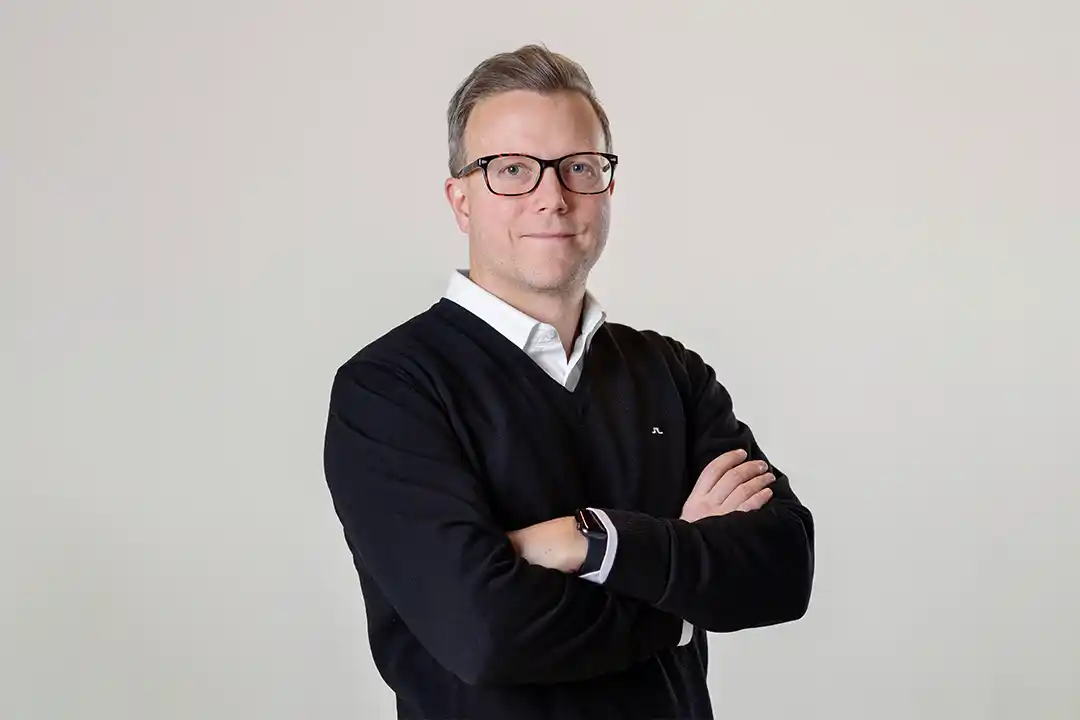
Andrew Kvålseth, CIO and EVP Growth and Investments in Schibsted.

Andrew Kvålseth, CIO and EVP Growth and Investments in Schibsted.
Looking at Schibsted’s marketplaces, they came from a horizontal classified business like you had in the printed paper, and then moved online becoming a success with brands like FINN in Norway, Blocket in Sweden and Lebocoin in France.
Now they are entering a transformational journey, moving into vertical business models, to make consumer experience better and more relevant.
“A good example is FINN, where if you buy your car in Norway, or sell your car like I recently did, you can do the entire journey through the platform. From transferring the ownership of the vehicle, to getting the right insurance, to ensuring your payments. And that’s what’s disrupting our marketplace model to a transactional end-to-end highly focused marketplace model.”
Supporting transformation
Looking at the larger acquisitions Schibsted made in the past year or two, a lot of them are focused on marketplace models that support this transformation. Autovex was acquired in Finland, a vertical specialist for car sales. Nettbil, a digital used car marketplace is another example, as is Gire Mobility, a B2B marketplace for flexible on-demand car transportation.
“There are more in the pipeline that we look at in this space,” Andrew reveals.
So, Schibsted is looking at both disruptive news media options and investing across the marketplace space.
“We still have a value-driven and long-term approach to our investments, as we had even during the more tiger-focused years. But we also need to stay curious, constantly try to learn and evolve, yet staying true to who we are and our mission as a company, empowering people in their daily lives.”
So, if we’ve left the tiger far behind – what animal would best describe that kind of investor?
“I would say maybe it’s the year of the dolphin, always stay curious and learning.”
[Sassy_Social_Share]

Nathalie Kåvin
Head of Corporate Brand, Schibsted
Years in Schibsted: 5
My favourite song the last decade: Stark & Sårbar – Moonica Mac
Trust and credibility will fuel news media
Trust and credibility will fuel news media
Journalism is facing fundamental challenges as online newspapers are no longer cutting-edge. A group in Schibsted has worked to set the direction for newsrooms in Sweden and Norway in the AI era.
By Gard Steiro

Trust and credibility will fuel news media
Journalism is facing fundamental challenges as online newspapers are no longer cutting-edge. A group in Schibsted has worked to set the direction for newsrooms in Sweden and Norway in the AI era.
By Gard Steiro
The editor stood wide-legged in front of the editorial team. On the wall behind him shone an image of a long suspension bridge over a turbulent sea. On one side lay a grey and abandoned village, on the other, an idyllic island with coconut palms, white sand and an aura of nirvana.
“Guys,” said the editor. “Now we just have to cross this bridge. Over to the digital side. It’s safe and comfortable there.”
This is a quite common metaphor in the media sector: the digital transformation is a journey from A to B. From a print to an online newspaper. From radio to podcast. From linear television to streaming.
This is wrong.

We need to drop the metaphor that digitalisation is a bridge to cross, in the sea. It has no end point.

We need to drop the metaphor that digitalisation is a bridge to cross, in the sea. It has no end point.
Let’s once and for all bury the bridge metaphor. Or – more precisely – drop it in the ocean and let it sleep with the fishes. Because the digital transformation is not a journey. It has no endpoint. We cannot look forward to calm days on a paradisiacal island. No, unfortunately, we are doomed to eternal sailing in turbulent waters.
“We are no longer talking about digital transformation, but the transformation of digital,” said Nic Newman, Senior Research Associate at the Reuters Institute for the Study of Journalism.
Several journalists have later made the quote their own. It’s not surprising. Newman is right. Everything suggests that editor-driven media, even in the most digitalised markets, now face fundamental changes. Online newspapers as we know them are no longer cutting-edge. They may suffer the same fate as the print editions. It is adapt or die. Again.
This is something we have tried to address at Schibsted News Media. In the spring of 2023, a group of employees worked to set a direction for newsrooms in Norway and Sweden. The goal was not to micromanage editors or editorial teams. They are autonomous units and know their users best. Media houses cannot and should not be subjected to micromanagement.
Moreover, for a large media conglomerate such as Schibsted, it is beneficial and essential that media houses do not make exactly the same decisions in all situations. Different approaches ensure broad innovation, ample room for experimentation, and cross-brand learning.
But some trends are so fundamental that no one can afford to overlook them. The changes are so significant that the media must collaborate to adapt to a completely new reality. Some of these potential epochal shifts for journalism were addressed by the project Next Generation Newsrooms. The work resulted in a series of proposals for initiatives at Schibsted News Media. Here are three of the most crucial:
Invest in our brands
Invest in our brands with trust and authenticity as our main differentiator. In general, Schibsted’s brands have high trust, and we set strict requirements to adhere to our editorial guidelines. But all media are being challenged by generative AI on parameters such as speed, cost, and product experiences. It will become increasingly challenging both for reporters and the audience to navigate sources and facts amidst the explosion of content production.
Therefore, there is reason to prepare ourselves for trust and authenticity to be our most important value proposition. Authenticity is our strongest card when much of today’s human-created content can be replaced by generative AI. The media needs to strengthen and nurture trust and authenticity, and equally important: communicate clearly how we work and how we adhere to our ethical standards. We cannot take for granted that the audience understands what lies behind genuine, truth-seeking journalism.
Leverage AI
Leverage AI for better products and efficient newsrooms. Schibsted News Media has been experimenting with AI and robot journalism for a long time and has a strong foundation to build on. However, the use and development of AI tools have often been limited to specific groups and have not transpired into widespread knowledge. This cannot continue. Whilst generative AI poses a threat to us, it will be a crucial enabler to deliver on customer expectations regarding our product and content. To succeed, time is of the essence, both to reap short-term benefits and even more importantly to experiment and get familiar with AI in the newsrooms, to keep up and adapt.
After the project group delivered its recommendations, all media houses in Schibsted appointed AI-responsible personnel. Several teams are collaborating across the board and sharing experiences. We have hired a coordinator with substantial technological and journalistic experience to lead the work. One of the goals is to identify potential new needs and steps in the editorial workflow and recommend the next actions for tooling development. The significant change, however, is not about building tools but creating a culture for experimenting with generative AI throughout the organisation. Even though this technological paradigm shift can be a threat and must be met with healthy criticism, we must also embrace all the opportunities we now have. They can represent a new spring for journalism.
Challenge ourselves
Challenge ourselves from within and outside. If we are to be completely honest, not much has changed since the first online newspapers became accessible to everyone in the early 2000s. We still present our content in traditional formats. The storytelling techniques are strikingly similar to those we swore by when print newspapers were at their peak. It’s a paradox. Our users have long since adapted to new content formats. And yes, they actually prefer them to news media.
Surveys show that the next generation of news readers spend far more time on TikTok than on all traditional media. But that’s not all. They also use social media to keep up with the news picture, even during major news events. We cannot overlook this.
Our challenge is that our core audience, the traditional newspaper readers, are highly satisfied with our products. If we change too much and too quickly, they protest. It’s bad for business. The consequence is that we spend a lot of time on incremental innovation, but we probably do not allocate enough time and resources to radical changes and experimentation. This causes the gap between us and the next generation to widen. And it could become so large that it’s impossible to build a bridge (pun intended) over the chasm.
To avoid this future, it was a clear recommendation from the project that Schibsted allocate more resources to creating news products specifically targeted at young people and other groups who do not find us relevant today. This can naturally happen under an established brand, but we believe that we should also test out entirely new services, not necessarily to replace today’s websites, but to enable experimentation with very radical solutions.
The project does not point to a single redemptive solution for the newsrooms of the future. We cannot draw a detailed map to a safe haven for journalism. Our suggestion is rather to launch a whole series of large and small speed boats that can provide us with a higher development pace, better dialogue with the audience, and a greater opportunity to adapt to a technological shift that we haven’t seen the likes of since the internet emerged. We are not sure where it will lead us, but we are confident that our fuel will be trust and journalistic credibility.
[Sassy_Social_Share]

Gard Steiro
Publisher, VG
Years in Schibsted: 23
My favourite song the last decade: I Need Never Get Oold – Nathaniel Rateliff & The Night Sweats
Meet Our People 2024: Business
Meet some of our people
New offers of news bundles are a first move to create an ecosystem within Schibsted. AI brought a 500-year-old king to life. Tibber will help you get in control of your energy consumption. Meet three people from different Schibsted business areas.

Meet some of our people
New offers of news bundles are a first move to create an ecosystem within Schibsted. AI brought a 500-year-old king to life. Tibber will help you get in control of your energy consumption. Meet three people from different Schibsted business areas.
Schibsted is closer to an ecosystem
Schibsted has been working towards an ecosystem across our brands for many years. Now we’re getting one step closer with the Alpha project.
“Schibsted reaches 80% of all Swedes and Norwegians on a weekly basis through our different brands. So, we have a unique opportunity to give these users new offers and great experiences,” says Karl Hahtovirta, Director of Subscriptions in Sweden.
Karl, who has worked in all of Schibsted’s three business divisions, really sees how broadly Schibsted’s various products touch people in their daily lives.
Since we can share data across different Schibsted products, we have a much deeper understanding than before about the people who use our products and their needs. This data could help improve the products we have – Aftonbladet, for instance, could learn from the needs of Blocket users, Karl explains.
“We could also offer bundles with Schibsted brands or in co-operation with partners. And we could identify clusters of new products needed by these users and create them.”
As a start, Schibsted is already offering bundles of our different news brands in Sweden and Norway. Karl is also sure that the ongoing AI wave will open up for exciting opportunities, in which news brands can expand the content they serve and also offer the right format to the right user.
“In this AI-era, trust will be a great asset, and here Schibsted is well positioned with our loved brands.”
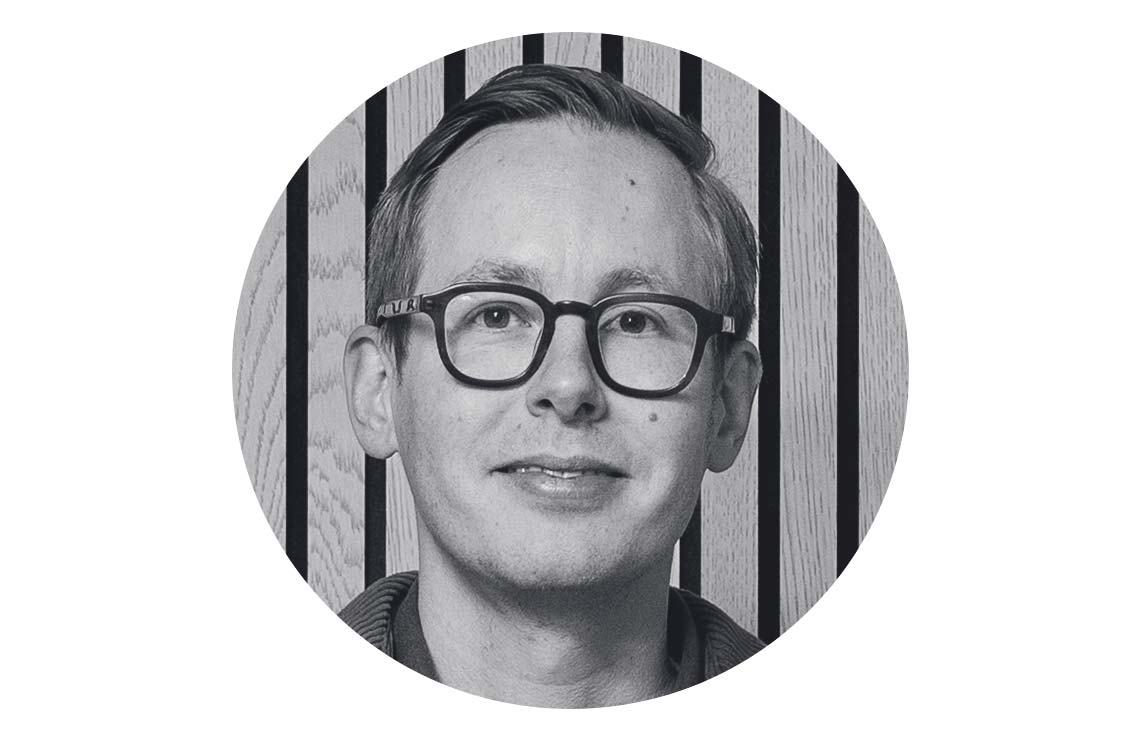
Karl Hahtovirta
Vice President Subscription Sweden, Schibsted
Years in Schibsted: 9
My favourite song the last decade: Get Lucky – Daft Punk
Chatting with a 500-year-old Swedish king
How do you bring a 500-year-old king to life? With the help of AI, of course.
“We created a chat where our readers could talk to Gustav Vasa. He got 2,000 questions and 60,000 people followed the live chat on Aftonbladet.”
Moa Gårdh is Director of Product at Aftonbladet. She is responsible for developing Aftonbladet as a product, making sure it lives up to users’ expectations – and at the same time ensuring it stays relevant and maintains its important role in society as a media company.
“The Gustav Vasa chat was an exciting way to develop editorial content and a great example of how we can work with AI. Not least it was a fun way to teach young people about history.”
Now, you might think that ChatGPT made it easy to create the chatbot. But it turned out there was a significant knowledge gap when it came to the historic Swedish king. So, the team behind it created a database with information about him, and they also trained the model to answer questions in a way similar to how Gustav Vasa would talk.
“It’s the social platforms that drive the development for how we consume content,” Moa explains, adding that as a media house, Aftonbladet needs to be open to new consumer habits and prepared to think outside the box.
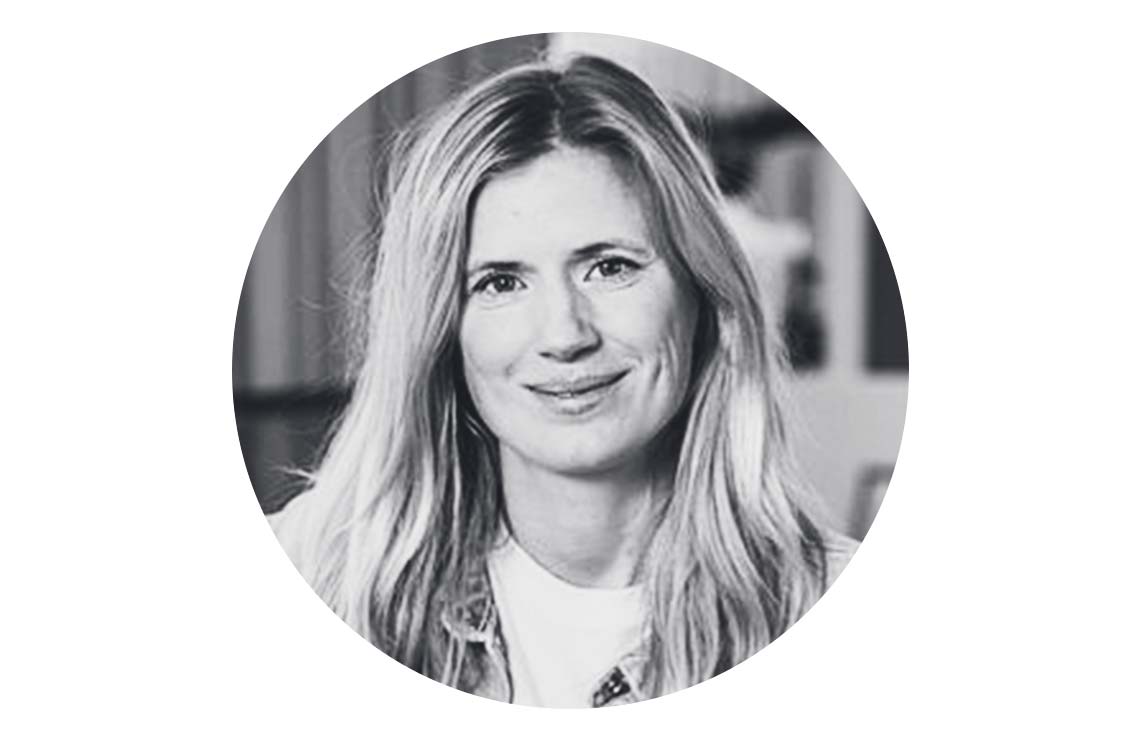
Moa Gårdh
Product och UX director, Aftonbladet
Years in Schibsted: 6
My favourite song the last decade: Ålen – Amason
Tibber is pushing an energy revolution
Their mission is to make green electricity more smart and cheaper for all households. Now Tibber has started to sell batteries to help consumers optimise their consumption, even more.
“We believe that technology will accentuate the green shift and every single customer experience. We are in the middle of a revolution,” says Edgeir Aksnes, CEO of Tibber.
The company delivers electricity to households in the Nordics, The Netherlands and Germany. But their idea is to help customer lower their energy cost with the help of digital services and devices. Like batteries for households with solar cells.
“We have created the world’s smartest battery, together with our partner Polarium. It adapts to electricity price, how much the sun is shining and to your consumption. And through our grid reward, you can get paid for supporting the power grid.”
Edgeir believes that helping people get control of their power consumption is crucial.
“When we started we had an idea that we would create the Internet Of Electrical Things. Today we see that that’s what we’ve done.”

Edgeir Aksnes
CEO and co-founder Tibber
Years in Schibsted: 2
My favourite song the last decade: Faded – Alan Walker
[Sassy_Social_Share]
Aftonbladet is ready for the AI revolution
Aftonbladet is ready for the AI revolution
New technology is just that. Technology. It’s when it’s in the hands of humans that it becomes transformative. People at Aftonbladet made it happen 30 years ago. And people will make it happen now, in the age of AI.
By Lena K Samuelsson

Aftonbladet is ready for the AI revolution
New technology is just that. Technology. It’s when it’s in the hands of humans that it becomes transformative. People at Aftonbladet made it happen 30 years ago. And people will make it happen now, in the age of AI.
By Lena K Samuelsson
Aftonbladet, the largest news destination in the Nordics, engages four million Swedes every day. They come to find out what happened, to understand why and to spend time with our content on news, sports, entertainment, food and lifestyle. They read, watch, listen and interact with us in a digital universe that has grown, flourished and developed over the years. A universe that also expands beyond Aftonbladet when younger audiences engage with our brand and news reporting on social media and through Google.
Embracing new technologies and channels in the service of journalism is what has moved Aftonbladet and Schibsted forward for decades, to the world-leading position in digital media we hold today. It has been quite a journey. Now, generative AI has taken centre stage, with full force. It will change us fundamentally. It is a new era. And it feels like 1994 all over again.
Phones were for talking
1994. The few who even had a mobile phone back then sported an Ericsson, Nokia or Motorola with an antenna. And phones were for talking. Yeltsin was the president of Russia, Clinton was still in his early days as president of the US. That autumn, the passenger ferry Estonia would sink on a stormy night in the Baltic Sea. Pulp Fiction and The Lion King were new movies. Jennifer Aniston starred as Rachel in the first episode of Friends, and we watched OJ Simpson flee from police on live TV.
I was on a trip to the States in the spring of 1994 when Aftonbladet “discovered” the internet. We were on a study tour to New York and then down to Atlanta. And that’s where it happened. But the truth is, on that particular day, we split up. My colleague and I visited the hottest new thing: CNN. The others, including Kalle Jungkvist, later the legendary first editor-in-chief of aftonbladet.se, visited the Poynter Institute and Atlanta Chronicle and Journal. And that’s where Aftonbladet discovered the internet.

Aftonbladet’s AI hub.

Aftonbladet’s AI hub.
Right from the start, it was clear that there were two exciting paths to take: News – like us, and classifieds – the marketplaces for buying and selling.
That same autumn, Aftonbladet went online, one of the first media houses in the world to do so. It was an act of curiosity, vision and maybe a little bit of madness.
What started out as a small group of open-minded people with different skills and experiences working together, experimenting and testing, would one day grow into a full organisation, forming the Aftonbladet Universe we know today. It was also the start of an ecosystem of media, marketplaces and other digital consumer services under the Schibsted brand. But that’s a story for another day.
Connected around the clock
No one could fully understand at the time how the internet would reshape the entire media business and our daily lives. No one knew that we would all carry incredibly powerful computers in our hands – and on our wrists – and that we would be connected around the clock. No one had heard of screen time, SEO or CTR. We couldn’t begin to comprehend the magnitude of the change.
But we knew it was something completely new. It was computers and code. But Aftonbladet turned the technology into a tool, helping us to create entirely new experiences around our journalism, multiply the number of readers and finally crack the code for business and payment. And in doing so, we managed to secure a unique digital position in the everyday lives of the Swedish people.
Aftonbladet’s breaking news desk.
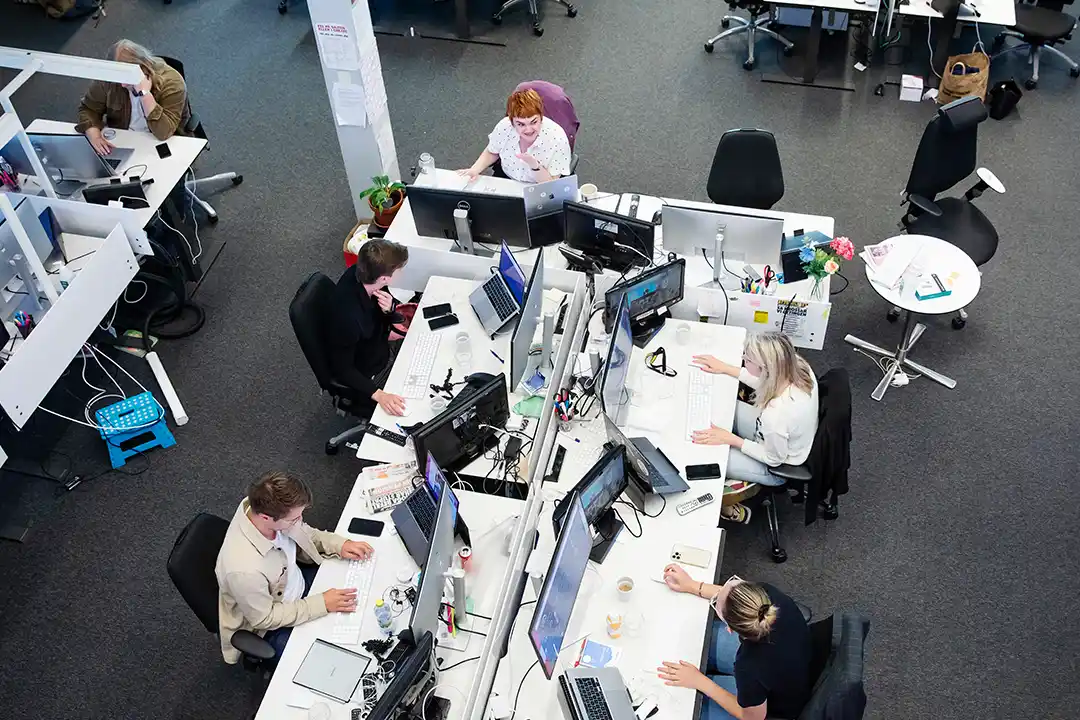

Aftonbladet’s breaking news desk.
2008. The web had challenged the business model of the print newspaper – a packaged product, sold at a specific time, to people who went out to the store to buy it. Now everyone could access Aftonbladet from home or work via their PC, around the clock.
Journalism had become accessible – and largely free. But when Steve Jobs stood on stage in a black polo in the summer of 2007 and introduced the iPhone, the printed evening paper was fundamentally challenged. Suddenly, readers were no longer tied to a computer; they could have Aftonbladet with them in their pocket or bag, anywhere, anytime.
Suddenly, readers were no longer tied to a computer; they could have Aftonbladet with them in their pocket or bag, anywhere, anytime.
And the rest is, as they say, history.
Aftonbladet realised faster than most that this was a groundbreaking shift. When the iPhone was launched in Sweden in 2008, a small group of people with experience, passion and knowledge from different parts of Aftonbladet – editorial, IT and business – took up the fight for the small screen, facing off with an already strong web organisation and a still very powerful print newspaper. Today, most people read us on their mobile phones, and still, we are stronger than others because we were quick to embrace the new technology and use it in the service of journalism. What was once a small team that challenged from within is now core business.
Today. With AI available to everyone, a new era begins. AI is clearly not a new channel, like the web or the mobile. It’s not a new product either. But it’s a technological shift that will change us fundamentally. With generative AI comes many challenges, but also immense opportunities for those who dare and who manage to go first.
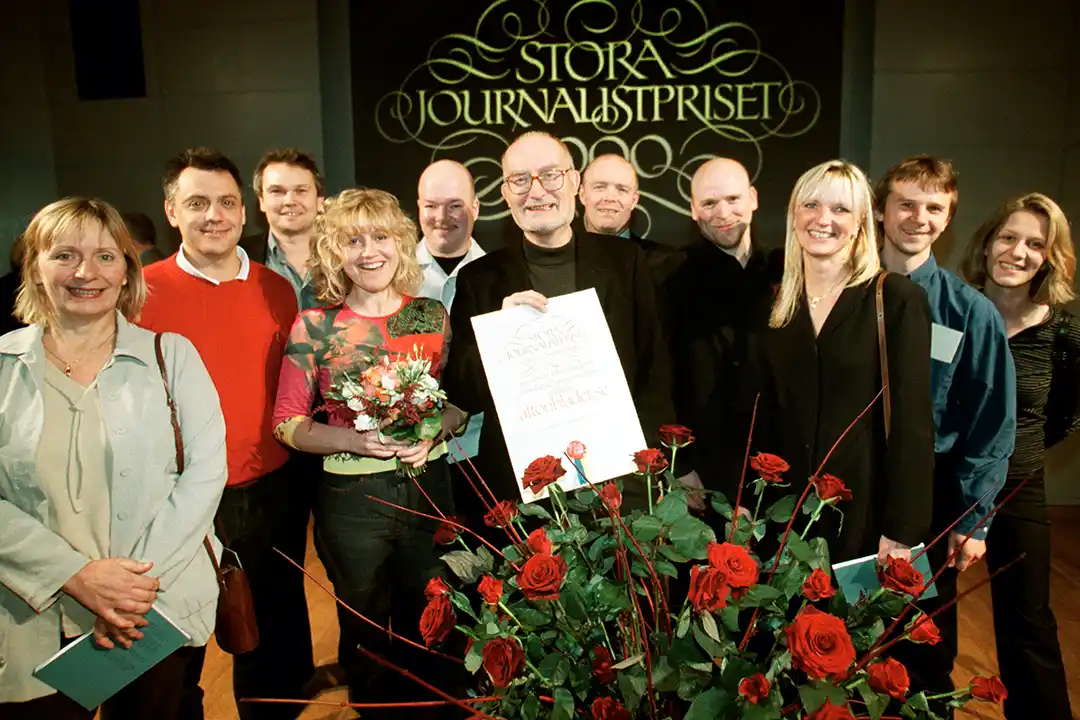
Aftonbladet celebrates winning Stora journalistpriset 2000 in the category New Media.

Aftonbladet celebrates winning Stora journalistpriset 2000 in the category New Media.
In many ways, we have moved past digitalisation; we are almost through it. Now it’s about transforming our digital self. Ensuring that Aftonbladet stands strong when we take the final steps from a newspaper online to a true online company with its heart and soul in journalism. A true online news site will be something else. Text, sound and video will merge into new user experiences, consumers will choose how they want to interact with us – rather than just be fed with a feed. Journalism will move beyond the traditional news destination and build more on relation to a brand and profiles. Content will to a much higher degree be personalised. The composition of an article and the presentation will cut its final ties to the print newspaper. Short versions and summaries will become core content, not add-ons. And storytelling will find new paths.
And, at this very moment in our journey, AI steps in. We don’t know where this is going to take us. We can’t foresee how AI will transform society or us. But we know it is something new. And we are, as always, curious.
Generative AI will create entirely new conditions for our industry. The one who is quickest to understand and use the new technology will have a huge advantage. Media houses that dive into AI, that unsentimentally examine all their processes and become much better at taking care of both users and customers, will stand strong. Many others will not.
It’s about a culture that embraces data, personalisation and algorithms, making technology our strongest ally in the service of journalism.
A powerful tool
AI can become a powerful tool for free and independent journalism and for Aftonbladet, as a true digital company, to be more sustainable, more efficient and even smarter.
AI can also become a tool for disinformation and hate. We will investigate and report on this; we will use AI-empowered journalism as a counterforce. We will help our readers understand the societal shift we are now entering. And we must understand it ourselves. It might be frightening. But it’s also incredibly exciting.
So, here we go again! It’s time for Aftonbladet to turn things upside down. And today we do it together in Schibsted, a group that is world-leading in digitalising its media houses and already has many AI initiatives and specialised common teams.
To genuinely build an Aftonbladet that utilises the full power of generative AI, we have put together a small group of people who are passionate about new things. No one is an expert when it comes to what we don’t know. So, these individuals have different skills and experiences. They come from the newsroom, sports, print, product, pod, tech and UX. They will challenge us, experiment and test stuff, along with our users. And they will slowly change us from within. As always.
Because new technology in the hands of inspired people is transformative. That’s the Aftonbladet Way.
(And yes, this text was written with the assistance of my new friend Chat.)
[Sassy_Social_Share]

Lena K Samuelsson
Publisher Aftonbladet & founder of Schibsted Future Report
Years in Schibsted: 27
My favourite song the last decade: Shallow – Lady Gaga & Bradley Coop
Co-creation sparks innovative solutions
Co-creation sparks innovative solutions
News as music, dynamically adjusted content to match your emotional state or combining mindfulness and news. IN/LAB is experimenting to find news experiences that can engage news outsiders.
By Molly Grönlund Müller, Belenn Rebecka Bekele
Rami Syrag, Safy Adem and Salem Mohammad Ali, is working on an idea in an IN/LAB ideation session.
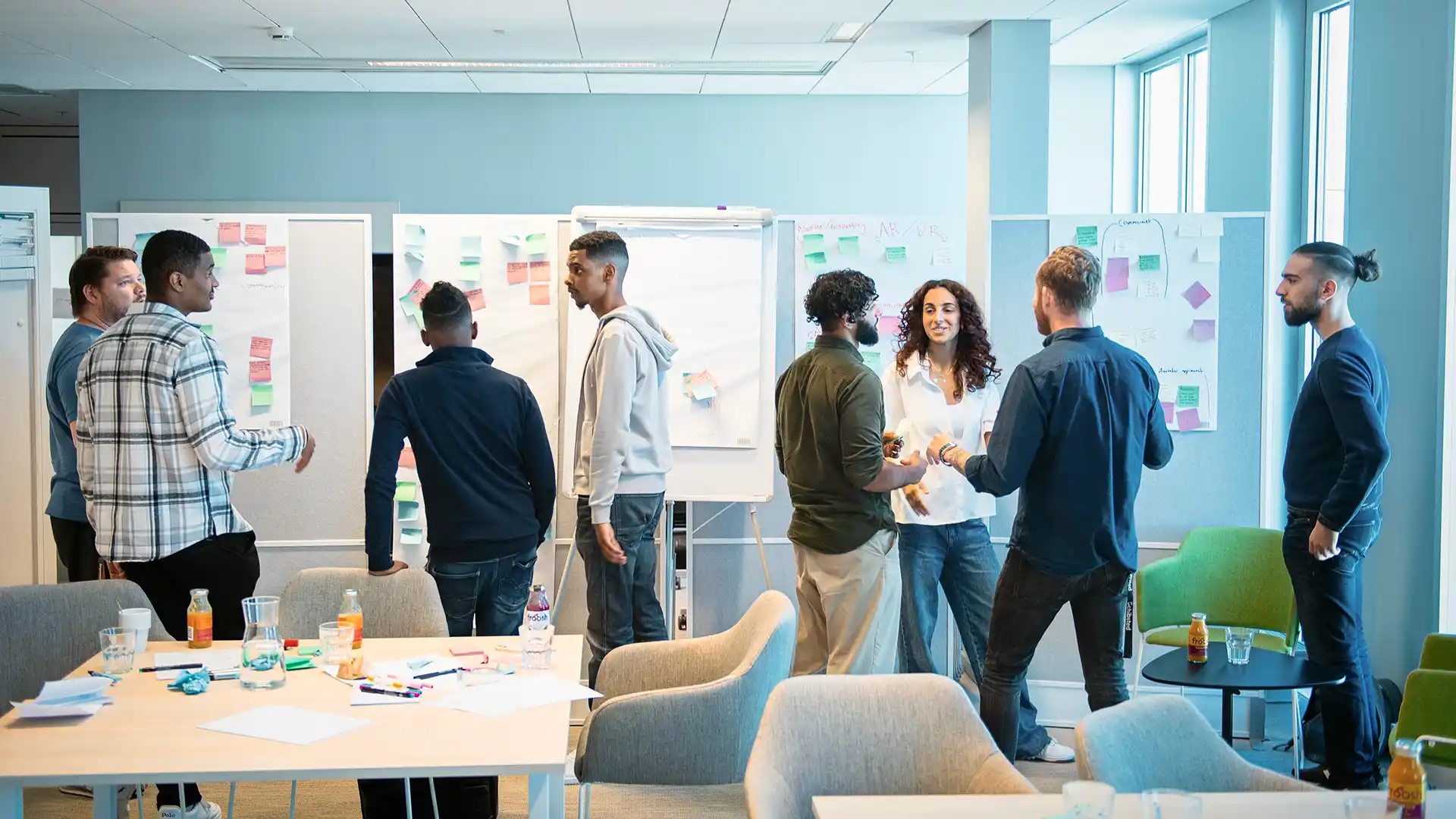
Co-creation sparks innovative solutions
News as music, dynamically adjusted content to match your emotional state or combining mindfulness and news. IN/LAB is experimenting to find news experiences that can engage news outsiders.
By Molly Grönlund Müller, Belenn Rebecka Bekele
IN/LAB’s mission is to prototype future news experiences for current news outsiders. We listen to their perspectives, seek to identify pain points and explore how these can be catered to in future news experiences.
At IN/LAB, a joint venture between Schibsted and the Tinius Trust, we believe that co-creation holds the key to unlocking new ideas and solutions. By bringing together people with different perspectives, experiences, and skills in collaborative creative processes, we can better imagine what the future of news could look like.
Include to innovate
To enable sustainable developments in the news industry, we believe more diverse voices need to be included in conversations about future products and formats. In this age of rapid transformation, our industry needs great ideas – and we need to – recognise that they may not always come from people heavily invested in traditional ways of doing things.
A 2023 study by IN/LAB and Järvaveckan Research showed that close to half of Swedes and Norwegians actively avoid the news, with frequent news avoidance being especially high in socio-economically vulnerable areas. We think it is of critical importance that we bring these voices in; we need to talk with, not about, them and their perceived issues with the news media.
When we share that our lab is called “IN/LAB,” many assume that the “IN” is for innovation. But really, it stands for inclusion – which in turn enables innovation.
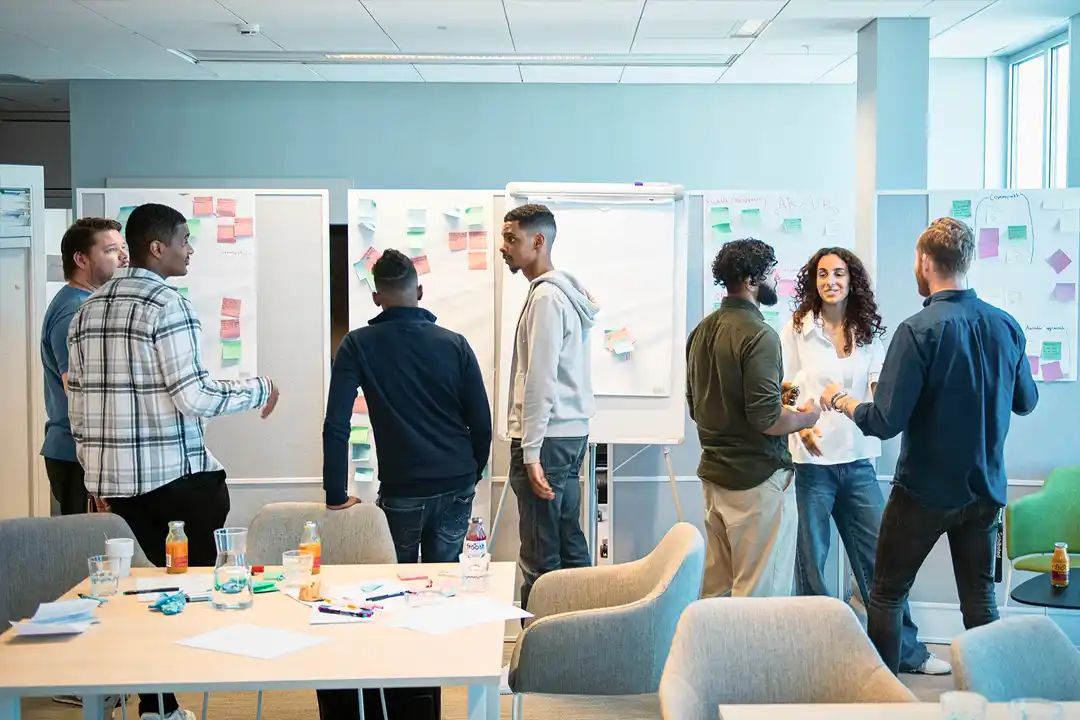
IN/LAB’s co-creation processes inspire thought-provoking discussions and raise important questions about the possible futures of news.

IN/LAB’s co-creation processes inspire thought-provoking discussions and raise important questions about the possible futures of news.
Co-creation with young users
Our efforts have involved diverse groups, including young teenagers from outer city Stockholm, young tech enthusiasts and graduates working to fight climate change. What all our great co-creators have in common is that they express various pain points in and from their news experiences. These pain points involve news that makes them feel too sad and frustrated or news that fails to highlight diverse perspectives. Other frustrations involve experiences with contemporary product formats that don’t fit with the needs and wants of the group.
During our first year of operations, we have sought to understand these themes by hosting brief ideation sessions, deep-dive workshops, and programs spanning multiple months. The work always starts with a problem or pain point identified, upon which we typically phrase a “How might we…” statement for the selected group of co-creators to transform into a possible future solution. Example statements that our work has explored include: “How might we enhance voices from outer city areas with digital tools?”, “How might we involve our friends in our news experience?” or “How might we consume climate news in a way that gives us hope for the future?”
Prototyping Possible Futures
Our co-creation processes have yielded prototypes of varying degrees of sophistication. Regardless of their format, they serve the common purpose of inspiring thought-provoking discussions and raising important questions about the possible futures of news. To truly innovate, we need to be open to exploring not only the most probable or desirable scenarios but a broader spectrum of futures as well. This is important because some of the challenges facing the news media today might need more than incremental improvements.
By prototyping possible futures, we make them more tangible. Examples of IN/LAB prototypes include:
News as music was a prototype news experience presenting news to the beat of AI-generated music – or as an AI-generated rap song. The experience was tested live on Aftonbladet.se for 1,000 selected young users and was positively received. The idea came from the News Changemaker Program, our ten-week youth co-creation program.
Senti Sense is a fictional news product that analyses the user’s reactions to news in real-time and dynamically adjusts news content (e.g., language, tonality and angles) to match the user’s emotional state and empower feelings of clarity and understanding when consuming news. The idea came from News2030, our five-day design sprint co-hosted with Schibsted News Destination Engineering.
Mindfulne(w)ss is a fictional app combining news and mindfulness to make you more conscious in your news consumption. The app contains a conscious check-in, slow scroll and no clickbait – all to promote inner calm. It guides you through the emotions you get when reading a news story and helps you reflect on the news content. The idea came from our co-creation workshop with Naturskyddsföreningen’s young ambassadors.
The power of co-creation
By fostering an environment of shared creativity, we can find new ways of reaching potential audiences and tackling critical problems in the news media industry. Our work underscores the power of co-creation in sparking innovative solutions to shape a sustainable path forward.
[Sassy_Social_Share]

Molly Grönlund Müller
Community Researcher, IN/LAB
Years in Schibsted: 1
My favourite song the last decade: Step Out – José González

Belenn Rebecka Bekele
Community Researcher, IN/LAB
Years in Schibsted: 1.5
My favourite song the last decade: Son Shine – Sault
All of Denmark’s marketplace is ready to dream big
All of Denmark’s marketplace is ready to dream big
A beloved marketplace where you can find everything from a stuffed lion to a used bicycle. With almost 370,000 active monthly users, DBA has a solid position in Denmark – and now a cross-collaboration in Schibsted will make them even stronger.
By Julie Schoen

All of Denmark’s marketplace is ready to dream big
A beloved marketplace where you can find everything from a stuffed lion to a used bicycle. With almost 370,000 active monthly users, DBA has a solid position in Denmark – and now a cross-collaboration in Schibsted will make them even stronger.
By Julie Schoen
A glimpse into my everyday life: You can hardly see it. It’s a difficult balance because you should ideally be able to spot it. At least a little. The right person must be able to see it, while everyone else should rather just walk past.
I have hidden a bag in the hedge. Tucked it under the green leaves. In the winter, it’s a more complex discipline. Then I must think more about the appearance of the bag. It should preferably be a bag that is not particularly noticeable. And if people finally see the bag, they’d instead think it’s trash. A bag without contents, thrown randomly into a random hedge, which people therefore leave alone.
But nothing about this bag is random. My bag today contains a cap. Two days ago, a similar bag hid a Barbie doll, and the week before, a candlestick. The cap in today’s bag is waiting to be picked up by the DBA buyer.
The cap was for sale for 150 Danish kroner, but the buyer haggled me down to 100 kroner and gained my trust in the deal. I wasn’t at home when it suited him to stop by and to be sure not to lose the deal, I placed the sun-shading headgear in the hedge. Then the buyer can come by whenever it suits him. This way my DBA shop is open 24/7.
Camouflage is needed
It feels a bit silly to hide one package after another in the hedge, especially when some of my neighbours are watching. They must believe that I deal in shady matters. If only they knew that I don’t run a covert business, but on the contrary, it’s something that helps “clean up the planet” by selling second-hand and lining my wallet with the help of old Barbie dolls. My business is not shady, but some degree of camouflage is required.
There are a few hours to go until the cap and its new owner are united and I receive a money transfer. In the meantime, I cycle off to work. A job which is at… yes, you guessed it: DBA.
DBA is common ownership in Denmark. Eleven million goods were put up for sale in 2022 on the trading site for the 5.9 million people who live in Denmark.

Julie Schoen with her colleague Astrid Bruun.

Julie Schoen with her colleague Astrid Bruun.
Majken from marketing, who sits three chairs down from me in the Copenhagen office, also practices DBA as a hobby, a passion, and a holiday income. This morning, she went out of her front door, and with her, a bag that contained three bibs for babies.
As a press officer for DBA, my job is to get people to remember and discover DBA, while Majken’s job is all about making sure that the messages about the benefits of using DBA reach the right target group at the most advantageous times. Although the positive arguments for buying and selling used goods are gradually sitting on the spine of most Danes, DBA does not “sell” itself. There are competitors. Facebook Marketplace, Trendsales, and various vintage apps are emerging and specialising in several categories.
A big pie
Fortunately, the pie is big enough for all. In Denmark, 80% have bought second-hand within the past 12 months, and the number has increased dramatically in just one year, up from 76% last year.
This is partly due to the economic crisis. There are a lot of new ads for caps and baby bibs on DBA now. Last year, 27% of Denmark’s population answered that they had sold one or more things via DBA within the past year. This year, the figure has grown to 39%. It only makes the sum of everything you can find on the portal even more exciting.
On DBA you can acquire anything from a stuffed lion to a used bicycle. Among some of the more spectacular items that have been for sale are an old cannon, a replica of Mr Bean’s car, a live hammerhead shark and a folding moped. And it is precisely this wide range that makes DBA special. DBA is all of Denmark’s marketplace.
And it is precisely this wide range that makes DBA special. DBA is all of Denmark’s marketplace.
The company was founded in 1981 and was initially just a physical newspaper with advertisements. It was inspired by the Swedish newspaper of the same variety, called Gula Tidningen (The Yellow Paper), and therefore the Danish model came to be called Den Blå Avis (The Blue Paper).
Schibsted Pride Day 2022.


Schibsted Pride Day 2022.
In 1995, Den Blå Avis came online and was called DBA.dk. Until 2008, the Danish entrepreneur Karsten Ree managed the enterprise. Karsten Ree became famous in Denmark in 2008, when he sold his life’s work, DBA, to eBay for a billion Danish kroner. Since then, Karsten has only become richer, but he and DBA remain inseparable. Every time he embarks on a new entrepreneurial adventure, or his company submits accounts, DBA is mentioned.
“DBA… isn’t that the business that Karsten Ree runs?” Almost everyone asks that when you tell them you work for the blue trading site. Or they launch into an anecdote about a sewing machine they just sold, or a time when the buyer was nicer than expected. DBA, therefore, has an extremely strong brand, but by the same logic this makes it difficult to move. Even if we want to push it just ten centimetres.
Internal unity
A reputation that we don’t want to lose is that of our internal community. The unity among the employees has been the special sauce behind DBA’s success, and the social part is still very important to us. We are good at meeting every Friday at the Copenhagen office, where there is a small Friday bar. And the participation rate is high for the annual Christmas lunch when the Copenhagen office travels to Aarhus for a joint event.
We all eat lunch at the same time, and when the weather is good, we sit outside and enjoy our food – and each other’s company. We celebrate birthdays and we eat cakes. Our two “office mothers,” Lise-lotte and Lene, also try to entice us with fruit and toasted dark-rye (rugbrød) snacks.

Since 2021, Schibsted has been the owner of DBA, Bilbasen and Bilinfo in Denmark.

Since 2021, Schibsted has been the owner of DBA, Bilbasen and Bilinfo in Denmark.
For some reason, snack options have increased since Schibsted took over DBA (improving upon the boring eBay-sponsored snack selection in 2021). Just when the Danes had collectively learned that Karsten Ree no longer owned the marketplace, now we have to correct our table host at the next wedding, who, only updated on the second most recent change of ownership, attempts to ascertain: “Well, DBA …that’s what Karsten sold to eBay, isn’t it?”
Despite the fact that behind each change of ownership, there is a long sausage of explanations about who now owns DBA, the switch to Schibsted is a big change. Even though the office, the office chairs and the coffee machine are the same as when we were in the arms of eBay, there is now room and opportunity to dream big. A recent organisational change in the entire Schibsted Nordic Marketplace means that we are collaborating to a greater extent with our Nordic sister sites in Norway, Sweden and Finland to improve and preserve DBA.
So Majken and I can hopefully, someday soon, intensify the frequency of bags that must be delivered inside the garden gate and on the hedge. However, the speculation among my neighbours is unlikely to go away, regardless of how frequently or infrequently I dump anonymous bags into the shrubbery.
[Sassy_Social_Share]
Facts
170 people work at DBA and Bilbasen in the Copenhagen and Aarhus offices.
11.2 million listings by private users in 2022.
369,724 active users every month.
Sofa is the most popular search word.
Most listings of men’s shoes and clothes are created by women.

Julie Schoen
Press Manager, DBA.
Years in Schibsted: 2
My favourite song the last decade: Stor mand – Tobias Rahim and Andreas Odbjerg
Investment trends 2024
Investment trends
Quarter after quarter we’ve seen activity in the venture market go down. At least so it seems. Simultaneously, we are wondering what’s happening behind the scenes. Looking into numbers, pessimism mostly prevails.
By Sara Myrenfors, Investment manager, Schibsted

Investment trends
Quarter after quarter we’ve seen activity in the venture market go down. At least so it seems. Simultaneously, we are wondering what’s happening behind the scenes. Looking into numbers, pessimism mostly prevails.
By Sara Myrenfors, Investment manager, Schibsted
Do we see light at the end of the tunnel yet?
In hindsight, it is easy to see how boosted the VC market was a few years ago. High valuations and intense competition among investors were two of the main challenges experienced by VCs. Today, we are seeing a totally different VC market. There is a significantly lower pace of new investments with several VCs experiencing difficulties in finding co-investors and receiving considerably fewer investment proposals.
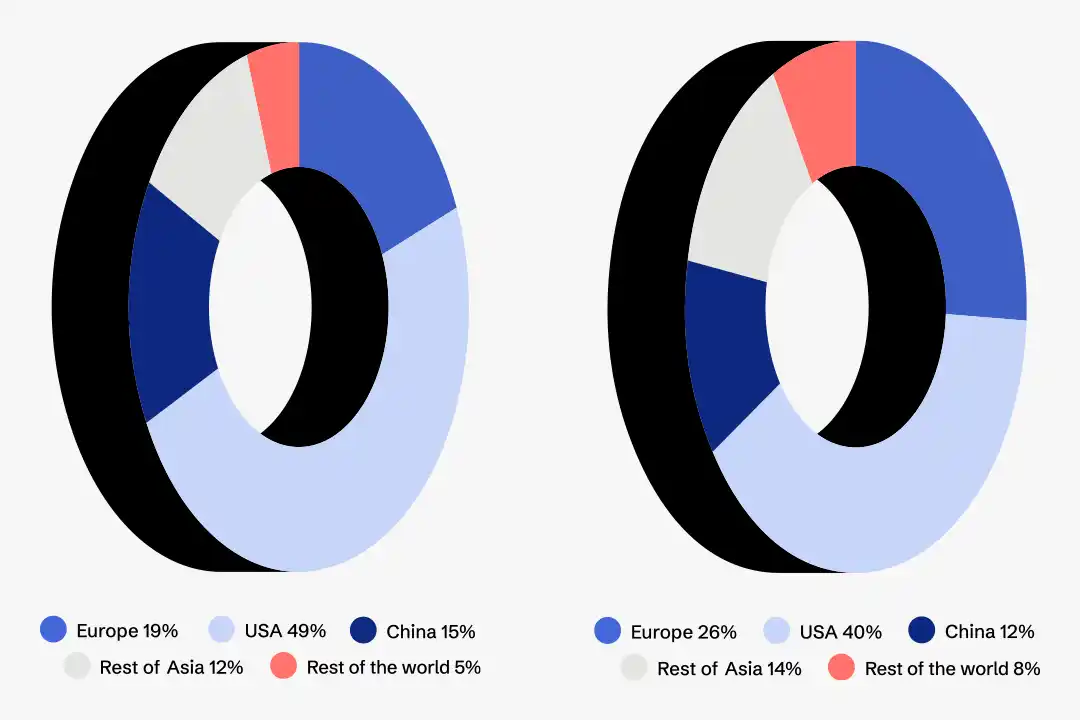
Left: VC investment seed stage per geography (company location) YTD 2023 (Q3). Right: Total VC investments per geography (company location) YTD 2023 (Q3)

Left: VC investment seed stage per geography (company location) YTD 2023 (Q3). Right: Total VC investments per geography (company location) YTD 2023 (Q3)
Even if many of the European VC market sentiments deteriorated further this year, the expectations for the next twelve months have improved. However, the confidence of fund managers in the long-term growth prospects is at an all-time low since 2018. This is largely explained by the current macroeconomic and geopolitical situation making both fundraising and exits challenging.
11 new European unicorns were born in the first three quarters of 2023, three of them in Q3.


11 new European unicorns were born in the first three quarters of 2023, three of them in Q3.
Zooming in on the Nordics, Sweden is starting to lose its dominance. The reason for this could be because the Swedish VC scene is more mature and most declines have been in later financing rounds. Instead Norway and Denmark have gained ground. Will the current climate be a reboot to a more even Nordic VC market, or will it scare off many new investors in the VC space? Time will tell. But a continuous cyclical development is the only thing we know for sure.

Most countries are back to 2019 levels of activity, with some exceptions like France (+37%), Denmark (+72%), Norway (+181%) and Italy (+57%), venture investment in H1 2019 compared to H1 2023.

Most countries are back to 2019 levels of activity, with some exceptions like France (+37%), Denmark (+72%), Norway (+181%) and Italy (+57%), venture investment in H1 2019 compared to H1 2023.
Activity levels same as in 2019
Most countries are back to 2019 levels of activity, with some exceptions like France (+37%), Denmark (+72%), Norway (+181%) and Italy (+57%), venture investment in H1 2019 compared to H1 2023.
3,4 trillion USD is the combined value of Europe’s tech ecosystem.
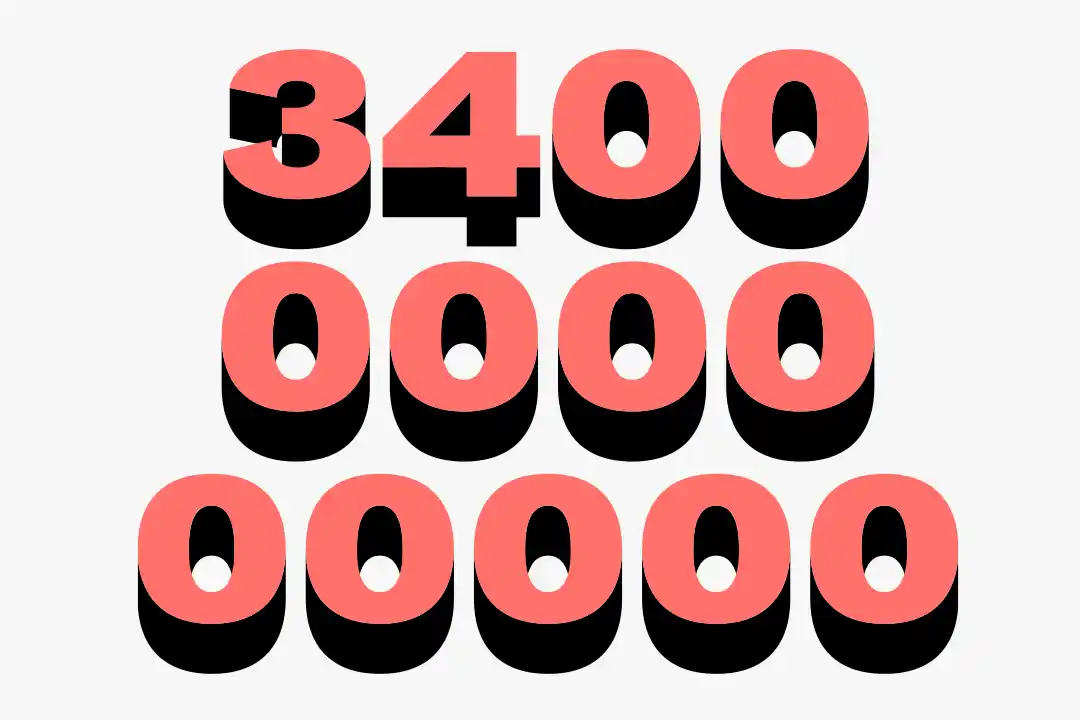

3,4 trillion USD is the combined value of Europe’s tech ecosystem.
11 new European unicorns was born in the first three quarters of 2023, three of them in Q3.
77 billion USD is the value of expected investment in European startups 2023 (well over the previous pre-pandemic record).
[Sassy_Social_Share]
We need to embrace and explore uncertainty
“We need to embrace and explore uncertainty”
Nathan Furr’s thesis is that uncertainty and opportunities are two sides of the same coin. And he’s going to give leaders in Schibsted 42 different tools to navigate a world of uncertainty.
Words by Ann Axelsson
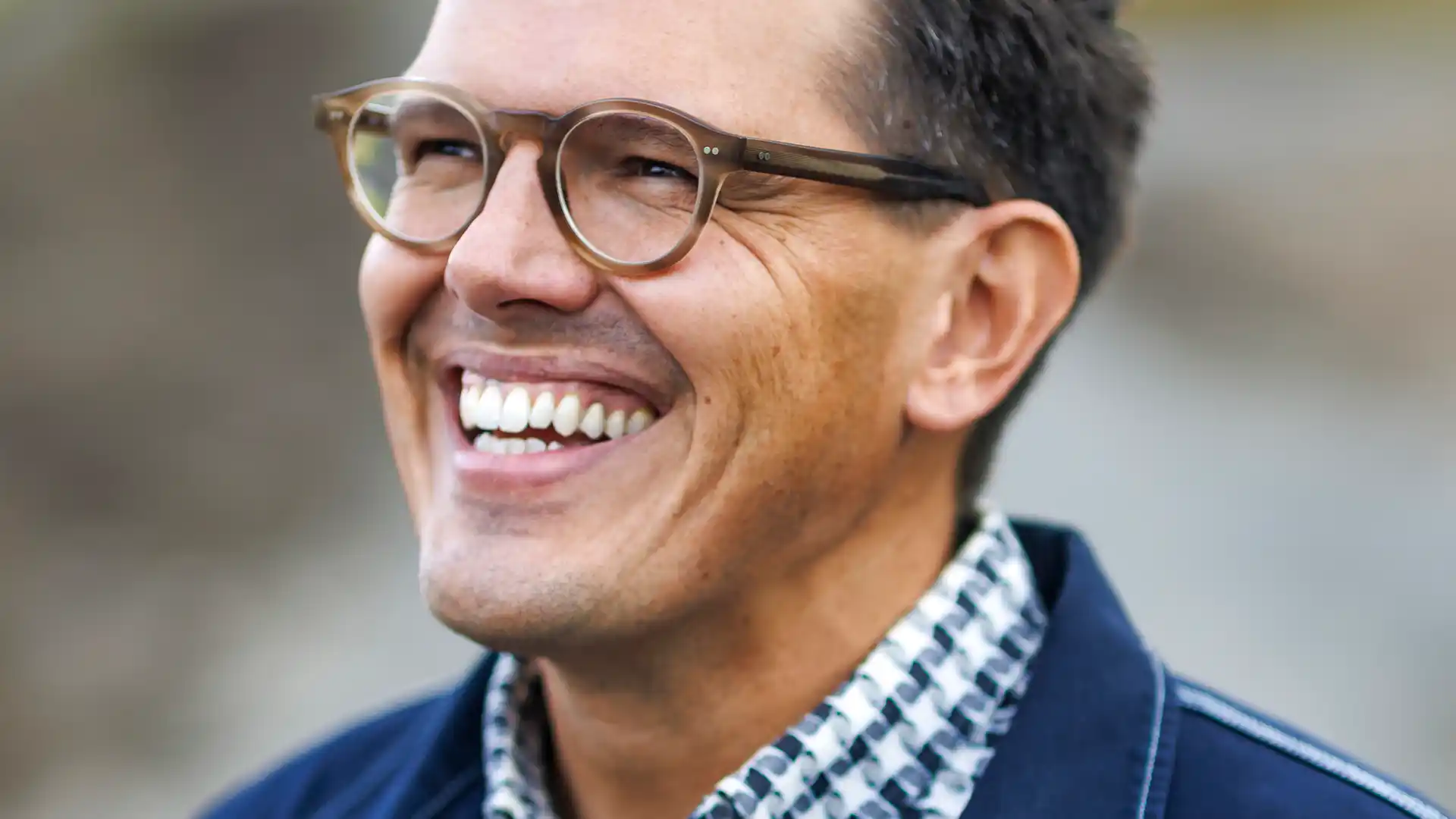
“We need to embrace and explore uncertainty”
Nathan Furr’s thesis is that uncertainty and opportunities are two sides of the same coin. And he’s going to give leaders in Schibsted 42 different tools to navigate a world of uncertainty.
Words by Ann Axelsson
“I strongly believe that we are missing a critical leadership capability in our modern world. The ability to face uncertainty and see the possibility.”
Nathan Furr is a Professor of Strategy at INSEAD and a renowned expert on managing in times of disruption and uncertainty. He’s also an author and co-author of several books. Now he’s leading a management program in Schibsted, using a framework he set up after years of working closely with startups, understanding their mindsets and how they handle risk and uncertainty.
And no doubt, we live in uncertain times. Choosing a path at a time when change is constant and happening fast can be very stressful. Nathan brings up generative AI as an example.
Confused with risk
“Uncertainty is when you don’t know all the variables involved. With AI we don’t know where it’s going to go. We don’t know how it will affect our careers or our lives. We don’t know what the future will be like.”
He also believes that uncertainty often is misunderstood and confused with risk – when you actually know the variables involved, you know the probability; you just don’t know the value you are going to get.
“Risks we can manage and control, but to handle uncertainty we need something different, we need to embrace it and explore it. Because if we see generative AI as a risk, we will probably avoid it and miss out on opportunities.”
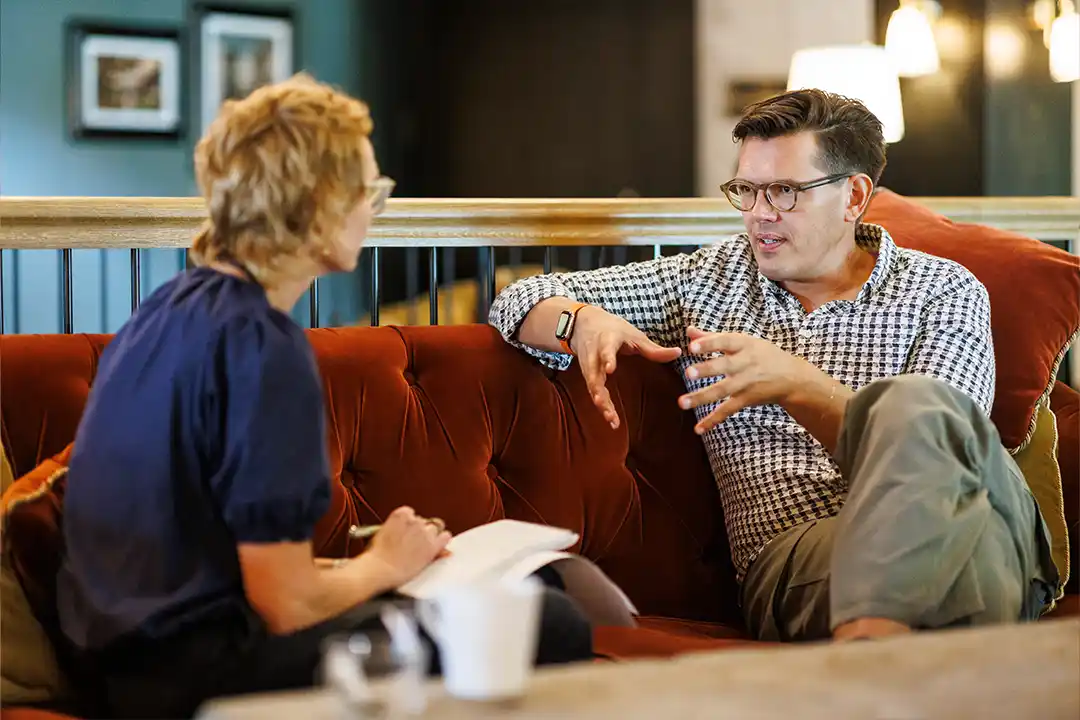
Nathan Furr is leading a management program in Schibsted, using a framework he set up after years of working closely with startups.

Nathan Furr is leading a management program in Schibsted, using a framework he set up after years of working closely with startups.
This is where the framework and the 42 tools come in. But perhaps even more important is the perspective that this theory is not something reserved for only your work life. That insight was pushed by Nathan’s wife Susannah Harmon Furr, who is an entrepreneur, designer and art historian.
Together, they wrote the book that serves as a guide to the framework, called “The Upside of Uncertainty.”
All parts of life
Susannah helped Nathan understand that uncertainty is incorporated in all parts of people’s lives and even if he speaks to leaders, it starts with us as people, as human beings.
“And she was so right. All that uncertainty, it fires in your brain. You feel it in your gut. And to help others through it, I really believe you’ve got to start with yourself.”
In the book, Nathan and Susannah prove that. They share some private stories about their lives and their family, times when uncertainty was fundamental and when the framework helped them see the crisis from a new perspective. Like when their son became very depressed in the aftermath of the COVID-19 pandemic, and they had to watch over and care for him. The tool they speak about is reframing.
“We reframed in that moment to focus on what we still had. And that was each other, the capacity to have him with us and give him the right treatment. Instead of focusing on the uncertainty.”
Reframing is one of four categories in the toolbox.
“We have this heritage from evolution that we tend to run from things we see as a loss or a threat. But when we see it as a gain, we run towards it. So, if you focus on the possibility side you trigger more of that positive momentum, and the tools in this category are about that,” he explains.
The three other categories are called priming, taking action, and sustaining. And with these in place, leaders will be better equipped to dare to explore new possibilities, according to Nathan.
Innovation capability
And that’s the whole point. To Nathan, leading in uncertainty is one piece of what he believes is a greater innovation capability.
“As the world becomes more dynamic, you’ve got to explore, and you have to innovate. And because I’ve been obsessed about what uncertainty is my whole career, I have also been obsessed with finding all the parts of the puzzle that lead to innovation.”
Some of those parts he has found are connected to behaviours, processes, culture, leadership and organisation. Things he will also go into during the course.
On a personal level, Nathan also struggles with uncertainty.
“It makes me really nervous.”
And, depending on personality, he acknowledges that some people will struggle a bit more than others to embrace his thesis.
“But on the other hand, the research is very clear – people can learn this and get better at it.”
[Sassy_Social_Share]

Ann Axelsson
Senior Product Manager, Strategic Communication, Schibsted
Years in Schibsted: 25
My favourite song the last decade: Paper Doll – John Mayer
How to make advertising sustainable
How to make advertising sustainable
The advertising industry is struggling to measure its carbon footprint. Experts call for a common standard, while consumers demand trustworthy marketing.
By Ricki Rebecka Petrini
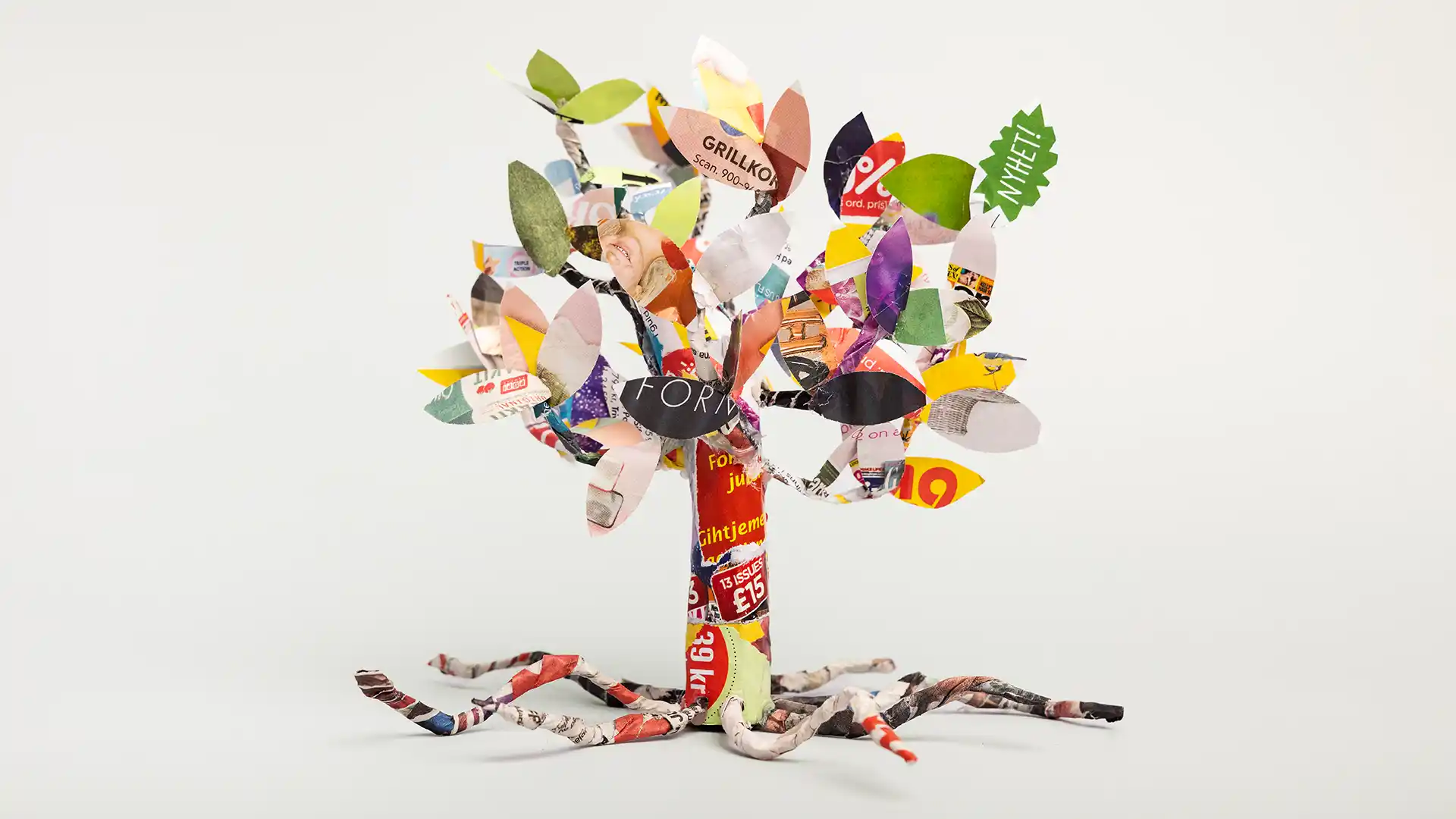
How to make advertising sustainable
The advertising industry is struggling to measure its carbon footprint. Experts call for a common standard, while consumers demand trustworthy marketing.
Words by Ricki Rebecka Petrini
It’s a well-known fact that brands need to take ownership throughout the entire value chain as they strive to achieve their ambitious sustainability goals. But the advertising industry has yet to offer the right tools to measure its own carbon footprint. If sustainability is the message, are there measures that are more sustainable than others? And how do you as an advertiser even begin to measure it? Simply put, what is sustainable advertising?
“All of us working in marketing know that our job is supposed to lead to sales, sales that in turn lead to consumption, which results in emissions, according to current business models,” says Karin Grohman. She’s the project leader for the Comm to Act Planet initiative, which was started by the four industry organisations: IAB, Sveriges Annonsörer, Sveriges Mediebyråer and KOMM.
This statement was proclaimed during the launch event with the above-mentioned industry bodies, and it points to the heart of the matter – the elephant in the room if you like. We live at a time when companies across industries must face the fact that a solid sustainability plan is no longer simply a desirable asset to have. It’s an essential one. While brands are battling with green concepts and how to converse around them, new hurdles loom on the horizon, hurdles that are hard to digest for even the most seasoned of advertising specialists.

Until now, in the advertising business, the climate issue has mostly been about the message.

Until now, in the advertising business, the climate issue has mostly been about the message.
What puzzles virtuous marketers and CEOs who’ve “gone green” is the question of responsibility and what role to play in a value chain that paradoxically boosts business and hurts the environment. The climate message has long since frequented most media plans drawn up by any respectable brand. But until now, it has mostly been about the message, not so much about the footprints tailing award-winning advertising and savvy sustainability campaigns.
“We who work in marketing need to put ourselves in the driver’s seat, take greater responsibility and be more involved in sustainability work. We are experts in driving change, and communication is an important and effective tool to contribute to a sustainable consumption culture, as well as changed norms and behaviours,” says Hanna Riberdahl, CEO at Sveriges Annonsörer.
Industry professionals pay attention
According to the Advertised Emissions study, by Purpose Disruptors, there was a 28% per capita increase in emissions in England within one year due to increased consumption as a result of advertising. Figures like these point to the fact that communication is indeed an effective tool to drive behaviour. Even if the behaviour is increased consumption and is harmful to the environment.
Industry professionals have started to pay attention – the launch of the Comm to Act Planet initiative in May 2023 may be one of the most evident signs of that in the Nordic market. The initiative pushes for collective responsibility to futureproof advertising.
The fear of being called out for greenwashing is high among Nordic advertisers.


The fear of being called out for greenwashing is high among Nordic advertisers.
There are several different climate initiatives underway from both media agencies and media outlets, where calculators have been developed to be able to determine the climate footprint of media. The purpose is to facilitate media planning and media buying, which is positive, says Hanna Riberdahl, but she also points to the risk of having different methods and different currencies for how we calculate.
“It will be incredibly difficult to compare and get a fair picture in the end. Therefore, we must agree on a common standard. We are incredibly happy that our parent organisations, the World Federation of Advertisers (WFA), AdNetZero and AdGreen, have taken on the responsibility to develop this global standard, and we are involved in this work on a local level.”
Fear of greenwashing
The fear of being called out for greenwashing is high among Nordic advertisers, according to the Comm to Act Planet team, something that results in so-called “green hushing.” This is a phenomenon often associated with greenwashing but rather it describes a culture of silence, in which brands avoid communicating their climate initiatives altogether.
When the advertising industry made its first contributions to fighting climate change, it was all about the message. Copywriters and content creators were not only successful in motivating the general population about brands’ efforts to limit their emissions, they also had marketers and media shielded from any scrutiny related to measuring their own carbon footprint. Until now.
“The most important thing for everyone in our value chain is knowledge. We must increase knowledge in all areas about how our work affects the environment and climate. This applies to everything – from our own impact to ensuring that every day we make decisions that result in lower CO2 emissions. We must also ensure that the messages are not misleading and that we communicate our climate work to a greater extent,” says Hanna Riberdahl.
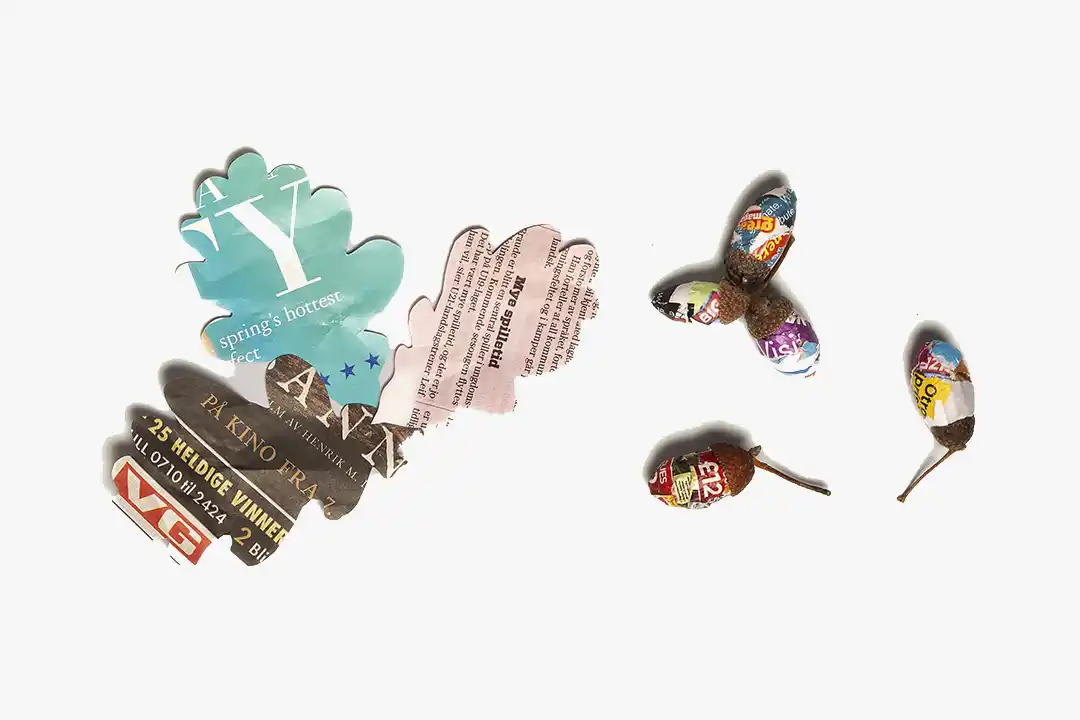
Defining what is sustainable advertising and what is not might be easier said than done, defining adequate data is a challenge.

Defining what is sustainable advertising and what is not might be easier said than done, defining adequate data is a challenge.
Raising awareness and measuring the emissions from advertising’s share of the value chain is one of many actions that can contribute to important insights. But perhaps it’s not the most important solution to making the industry sustainable, says Markus Ahlberg, Chief Sustainability Officer, Schibsted.
“It is important to coordinate internally regarding how and what we measure. Measuring CO2 emissions is very complex, and if it happens without coordination, there is a big risk that we will not achieve any comparability between different advertisements and media, which is the main purpose. Moreover, there are few other industries that have found a good way to compare CO2 emissions; therefore we should be humbled by the fact that it is difficult to measure advertising.”
In the end, marketers will need to find a way to juggle two tasks at the same time, as demands for profit won’t wait until the climate issue is solved.
“Advertisers need to be credible in their communication through transparency and by actively solving problems that benefit consumers, all while solving problems for society and the environment,” says Markus Ahlberg.
A lack of adequate data
Defining what is sustainable advertising and what is not might be easier said than done, as legislative bodies on a European level are still looking for adequate data.
“There is a lack of data on climate change impact so, without data, climate footprint is often an estimate. This is changing rapidly, and EU and new regulations have been pushing for greater awareness and transparency,” says Marie Baumgarts, partner and sustainability expert at KPMG.
With over 20 years of experience from working with sustainability in various capacities, Marie knows a thing or two about the difficulties of creating cohesiveness among different groups. She is a former member of the European Commission’s Technical Expert Group that advised the Commission on the EU Taxonomy; a classification system that helps companies and investors identify “environmentally sustainable” economic activities to make sustainable investment decisions.
The difficulty of measuring and having transparency throughout the whole value chain is apparent but does not alleviate the responsibility from any of the parties.
“The one who places the order, the client, has the main responsibility. But everyone in the value chain is accountable for their part and their own value chains,” says Marie Baumgarts.
Experts seem to unanimously agree that having the right tools and common currencies when measuring carbon footprints is imperative. Yet one more incentive needs to be accounted for as we are trying to identify any symptoms of an identity crisis in advertising – the consumer. A majority of Swedish consumers say advertising has an important role to play in climate change according to a Novus study (2023). So as the industry now is shifting its focus to the tools and currencies of battling climate change, the consumer still calls for trustworthy marketing. Once again, it is all about the message.
A wider audience
When asked about what the key factors are for sustainable advertising of tomorrow, climate expert Marie Baumgarts points out.
”This will be a differentiator, meaning that ads for sustainable products and services will likely reach a wider audience than ads for non-sustainable products and services.”
The aim of the Comm to Act Planet-initiative is to make everyone who works in marketing feel confident in advocating the most crucial issues of our time. This is certainly a good start and a sign of the times that climate change is at the top of the advertising agenda. It seems the industry wants to identify what measures need to be taken for it to be sustainable. As long as sustainability is at the heart of the message, brands and their advertising allies, are obliged to measure the true effects of their communication activities.
The remedy for an industry identity crisis is, by all accounts, more cohesiveness. And that is a cure that for sure will ungag the marketing community that never quite identified with any hush label in the first place.
Industry professionals have started to pay attention – the launch of the Comm to Act Planet initiative in May 2023 may be one of the most evident signs of that in the Nordic market. The initiative pushes for collective responsibility to futureproof advertising.
[Sassy_Social_Share]

Ricki Rebecka Petrini
Head of Marketing & Communications, Schibsted Marketing Services Sweden 2021-june 2023.
Years in Schibsted: 2.5
My favourite song the last decade: Novacane – Frank Ocean
Beyond the carbon tunnel vision
Beyond the carbon tunnel vision
Our focus on CO2 emissions and the climate crisis makes us forget about other societal and environmental challenges that are equally important. It’s crucial that we now ensure that innovations solve problems from a broader perspective, says Markus Ahlberg, Chief Sustainability Officer at Schibsted.
By Markus Ahlberg
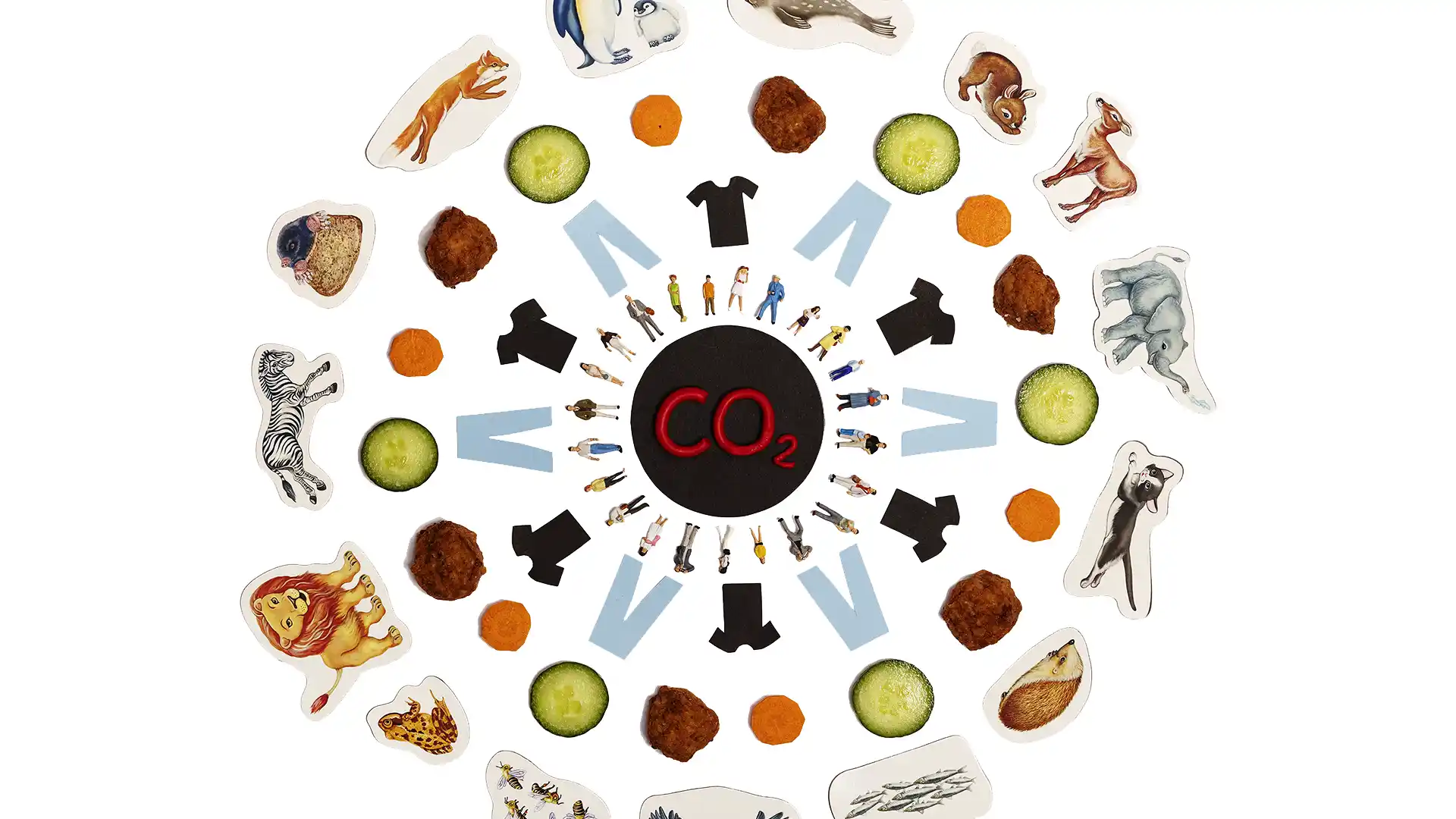
Beyond the carbon tunnel vision
Our focus on CO2 emissions and the climate crisis makes us forget about other societal and environmental challenges that are equally important. It’s crucial that we now ensure that innovations solve problems from a broader perspective, says Markus Ahlberg, Chief Sustainability Officer at Schibsted.
By Markus Ahlberg
We are at the epicentre of a great acceleration of parallel and interconnected societal and environmental developments. Over the past decades, we have witnessed exponential growth in technology and GDP. Delving into details, we also see exponential changes, both positive and negative, in many areas. There’s positive acceleration, such as increased living standards, a connected world, and technological advancements. But there are also negative trends, like growing inequality, depletion of natural resources, and ecosystem breakdowns. All these accelerations share a common source: they are driven by human activity. This parallel chaos is the world we live in, and we must address it when building our future because all these developments are interconnected.
The notion that the climate crisis is the sole key to a sustainable future paints an oversimplified picture of our journey towards a greener future.

A too narrow focus on carbon emissions might exacerbate other issues or even create new problems.

A too narrow focus on carbon emissions might exacerbate other issues or even create new problems.
A broader perspective should consider areas such as equality, biodiversity and overconsumption of natural resources. For example, using wind power to combat climate change sounds great, but it can harm biodiversity and the local communities where the wind farms operate. The same complexity arises with the idea of electric vehicles as saviours of a fossil-free world. But the need for mineral extraction can harm water and biodiversity. We need to change the narrative that climate is the only issue we need to tackle because the reality is much more complex than that. And a too narrow focus on carbon emissions might exacerbate other issues or even create new problems.
Embracing Holistic Sustainability
By broadening our perspective to encompass and understand important societal and environmental developments and systems, we can uncover layers of complexity that deserve and require our attention.
The Ecosystem Symphony
True environmental sustainability extends beyond carbon emissions to encompass the complete symphony of the ecological interactions that shape our world. Biodiversity, access to natural resources, and the delicate balance of ecosystems are all intertwined. A broader perspective requires acknowledging the fragile harmony that we must safeguard.
A narrow focus on carbon emissions falls short in addressing the overconsumption of natural resources, the ripple effects of species decline, or the cascading benefits of biodiversity preservation.
AI might offer a solution to apply systemic thinking, handle complexity and build models that balance all important areas, simultaneously.


AI might offer a solution to apply systemic thinking, handle complexity and build models that balance all important areas, simultaneously.
Social Threads in Sustainability
Sustainability isn’t just an environmental effort; it’s deeply connected to social equity and justice. For example, communities disproportionately affected by environmental degradation deserve recognition beyond a carbon-centric perspective. An illustrative example is how those of us in the Nordics, who will be less affected by climate change, should have a responsibility to support those in southern Europe who might need to migrate in ten years due to heat waves caused by a changing climate.
An inclusive sustainability narrative recognises the ripple effects of inequities and emphasises the importance of equitable solutions. If equality factors are not included in sustainability calculations, trust and democracy may be at risk, given the role equality plays in holding our society together.
A Financial Mosaic
The carbon tunnel analogy sometimes overlooks the economic intricacies that underpin sustainable development. Transitioning to cleaner energy sources entails grappling with economic dynamics, job transitions and the macroeconomic implications of a global shift. Sustainability, therefore, involves as much financial evolution as it does environmental change.
Consider the economic transitions that occur when communities reliant on carbon-intensive industries shift to renewable energy sources. The tunnel might obscure the struggles of communities facing job losses and economic uncertainty. By widening our perspective, we recognise the importance of just transition strategies that ensure economic resilience while forging a sustainable path forward.
Embracing new technologies
True sustainability depends on rethinking human behaviours, policy frameworks, and systemic shifts that go beyond technological boundaries. Recent technological developments related to artificial intelligence provide hope for new solutions to address our current narrow focus. Since the human brain appears limited in its ability to find comprehensive solutions, understand exponential change, and grasp the complexity of systems, technology like AI might offer a solution to apply systemic thinking, handle complexity and build models that balance all important areas, simultaneously.
Regardless of technological advancements, navigating the intricate path of sustainability requires breaking free from the tunnel’s constraints and embracing a comprehensive approach that weaves together environmental conservation, social equity, economic transformation, cultural understanding, and sound technological innovation.
[Sassy_Social_Share]

Markus Ahlberg
Chief Sustainability Officer, Schibsted
Years in Schibsted: 3
My favourite song the last decade: How Loud Your Heart Gets – Lucius
Why you should keep your light on when other brands go dark
Why you should keep your light on when other brands go dark
With bankruptcies in the Nordics reaching their highest in over a decade, it’s no surprise that companies are cutting back on marketing. But it’s a balancing act of cutting to survive today and investing to grow tomorrow.
By Christine Gelfgren

Why you should keep your light on when other brands go dark
With bankruptcies in the Nordics reaching their highest in over a decade, it’s no surprise that companies are cutting back on marketing. But it’s a balancing act of cutting to survive today and investing to grow tomorrow.
By Christine Gelfgren
In Byron Sharp’s ‘How Brands Grow,’ arguably one of the most influential marketing books of the past decade, he urges brands to never be silent. Why is that so important? The importance of the relationship between a brand’s market share and its share of voice, meaning how prominent the brand’s advertising is within its sector compared to its competitors, is well-known. Brands that have a higher share of voice than their market share have what’s called an “excess” share of voice and tend to grow relative to their competitors.
This relationship becomes particularly evident in times of economic downturn. Previous recessions serve as cautionary tales for companies who are considering weathering the storm by cutting significantly on marketing spend.
History offers us a blueprint
We live in what feels like unprecedented times, but ironically unprecedented times are the norm for every generation that’s come before us. Whether uncertain times have been caused by pandemics, wars or financial crises, we have more than a century’s worth of data showing the true cost of going silent when faced with uncertainty.
One of the first to study this was Vaile in 1927, who made a detailed examination of 200 companies during the economic depression and subsequent growth period post WWI. Companies that amplified their advertising budgets during the economic downturn not only maintained stability but experienced significant growth in sales. In contrast, companies that either reduced or abstained from advertising during this period lagged in sales performance.
Shortly after, Post, the ready-to-eat cereal category leader, saw themselves dethroned by Kellogg’s during the Great Depression. When Post slashed its ad spend, Kellogg’s doubled its budget, invested innovatively in radio ads and launched the now iconic cereal Rice Krispies. The aggressive marketing strategy yielded a 30% surge in profits and positioned Kellogg’s as the category leader, a title it has maintained for several decades.
Since then, the marketing landscape has evolved significantly, but the core truth remains unchanged. With each economic downturn, brands face the same decision—pull back or push forward. Brands that maintain, or even amplify, their advertising efforts in broad-reaching media during tough times stand a better chance of not just surviving but thriving.
What happens when brands go dark
For brands considering trimming their advertising spend, the good news is that up to six months off air won’t have detrimental effects on your brand, at least not according to a recent study by Millward Brown. The bad news is that if you continue after that it will likely weaken brand health, and once the decline sets in, it may be hard to reverse.
Kantar documented a telling case in which a leading UK beverage brand, enjoying a steady market share, chose to halt its advertising in one market for an entire year while maintaining its marketing investment in another. The market that went dark had a discernible 2% dip in market share, whereas the market that maintained spending held steady. When the brand eventually resumed its marketing the subsequent year, it couldn’t reclaim its lost share.
A comprehensive study from the Ehrenberg-Bass Institute that observed 365 U.S. brands gives further weight to this. When brands halted their advertising, they saw an average 10% decline in market share after one year, 20% after two years, and 28% after three years without advertising. Interestingly, smaller brands or those that were already experiencing a dip in their share before pulling their ads were more susceptible.
Short-term choices often have long-term consequences, and consistently sidelining advertising can be devastating for a brand’s future growth.
Finding opportunities when others cut back
While most brands won’t turn off advertising completely in times of economic downturn, they likely won’t spend with the same intensity. The brands that are able to resist cost cutting and maintain spend, they can often achieve an excess share of voice at a cheaper price. It’s like speaking with a steady voice in a room that all of a sudden gets a lot quieter, which gives you much more bang for the buck.
The IPA database underscores this strategy’s effectiveness, showing that 38% of companies reporting significant profit growth after the 2008 recession had increased their excess share of voice to over 8%.
By understanding the relationship between market share and the power of excess share of voice — especially when it’s more affordable — you’re set to make decisive, informed decisions, no matter the economic climate.
Creativity’s role
Just as it’s crucial to strive for excess share of voice, the same goes for obsessing about delivering creative advertising. Creative campaigns are twice as effective, and the audience remembers you more easily when the advertisement invokes an emotional response.
Featuring a cute dog in a commercial is a cheap trick to ramp up customers’ emotional response, and a 2022 study published in the Journal of Marketing discovered that people are more excited to buy products when they see dogs in ads. It’s no wonder that Amazon’s latest Super Bowl ad, featuring a heartwarming story of a rescue dog, scored among the highest in System1’s effectiveness study.
But just as the share of voice is relative to your category, so are your creatives. If all your competitors start using cute puppies in their commercials, the emotional response relative to your category levels out. The customers will then have a hard time attributing the commercial to the right advertiser and suddenly that puppy is just part of the noise, lost in a sea of furry faces vying for your attention.
Looking ahead
Having a steady voice when the room gets quieter will be one of the most important things brands can do to ensure their future growth through these tougher times. Incorporating emotion, creativity and ingenuity into your brand will amplify it to echo longer in the minds of consumers. It’s about understanding the nuances of your category, being aware of the saturation points, and having the foresight to pivot when needed. In the end, it won’t just be about who shouted the loudest, but rather who resonated the most.
[Sassy_Social_Share]

Christine Gelfgren
Marketing Strategist, Schibsted
Years in Schibsted: 0.5
My favourite song the last decade: Yellow Moon – Amason
We should align across the Nordics
“We should align across the Nordics”
The startup scene in the Nordics has taken giant leaps in the last ten years – perhaps most notably in Norway. Anders Mjåset, founder and CEO of the startup community Mesh sees some trends up ahead.
By Camilla Buch

“We should align across the Nordics”
The startup scene in the Nordics has taken giant leaps in the last ten years – perhaps most notably in Norway. Anders Mjåset, founder and CEO of the startup community Mesh sees some trends up ahead.
By Camilla Buch
Looking back, it’s clear that Norway was slower on the ball when establishing itself as a startup hub, compared to the other Nordic countries, Anders says.
“Compared to its neighbours, oil-rich Norway didn’t feel the impact of the financial crisis as early, which made other countries more prone to adapt. Norway has caught up now, though.”
In all of the Nordics, the digital economy has been in a startup (no pun intended) phase during the last 10-15 years but is now coming to a plateau with the super hype of 2022.
We’re now looking at a correctional phase, as evaluations drop significantly, and companies are less keen to invest.
What we currently have is a digital venture scene that is more involved in the business sector, taking up more space in politics and the public sector. It’s evolved from being the little guy, the challenger, to having more influence as a central part of the Nordic society. This evolution has also contributed to larger companies realising the need for digitalisation, innovation and, more recently, climate-focused action.

Anders Mjåset, CEO of startup community Mesh, believes the Nordics will keep a strong focus on impact-driven startups.

Anders Mjåset, CEO of startup community Mesh, believes the Nordics will keep a strong focus on impact-driven startups.
When looking at the future of the Nordic startup scene, Anders believes we need to be better at working across country lines. We’ve seen a lot of organic local growth, but the politics and founder environments should be more streamlined.
“Internationally, the Nordics are seen as one. To really mature and take up space in a global – and digital – market, we should align ourselves politically regarding startups and venture.”
Anders believes the Nordics will keep a strong focus on impact-driven startups, with climate being a driving force, and health-related innovation climbing.
“I think Schibsted has a real opportunity to be one of the biggest forces in the industry when it comes to the startup scene. The combined resources, knowledge from several fields and reach in Schibsted is unparalleled in the Nordics. That’s one of the main reasons Mesh is happy to be a partner to Schibsted, the possibility to push startup innovation in the right direction.”
Obviously, looking into the crystal ball, Anders believes that AI will be a massive part of startup and innovation in the coming years. Proptech, fintech and gaming are also big sectors where the Nordic countries are taking big strides, alongside climate and general impact.
We’ll have more digital-first companies built on venture dynamics, in contrast to a lot of the big slowly built businesses we’ve seen in the past. The revolution of AI will bring a lot of change and innovation, and it’ll be important for all kinds of businesses to keep up.
“I see no reason why we shouldn’t make the same kinds of goals for innovation as we’ve done for the climate – making the same kinds of efforts to modernise and bring society into the future,” Anders says. “And that future is built on the courage to take risks and push boundaries.”
This is Mesh
A Nordic community for the startup scene with workspaces in Oslo, Trondheim and Copenhagen. Schibsted and Mesh have a partnership where we will host events for our employees, Mesh members and their network.
[Sassy_Social_Share]
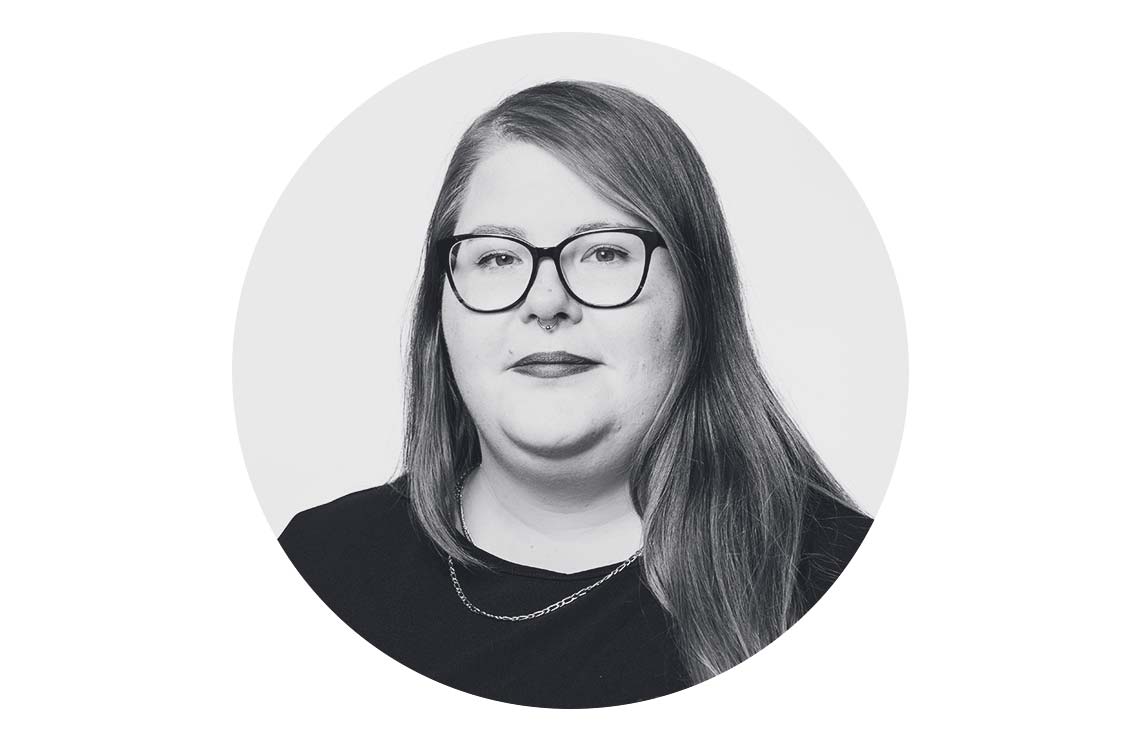
Camilla Buch
Communication Manager, Schibsted
Years in Schibsted: 3
My favourite song the last decade: Chronically Cautious – Braden Bales

